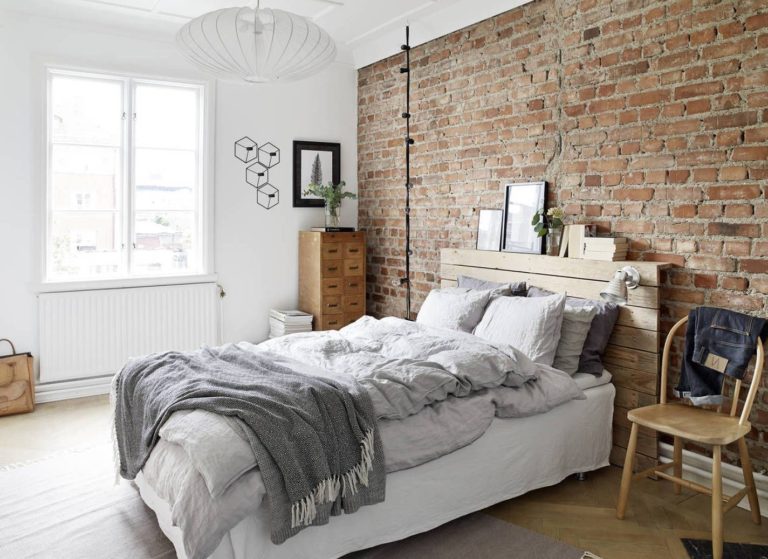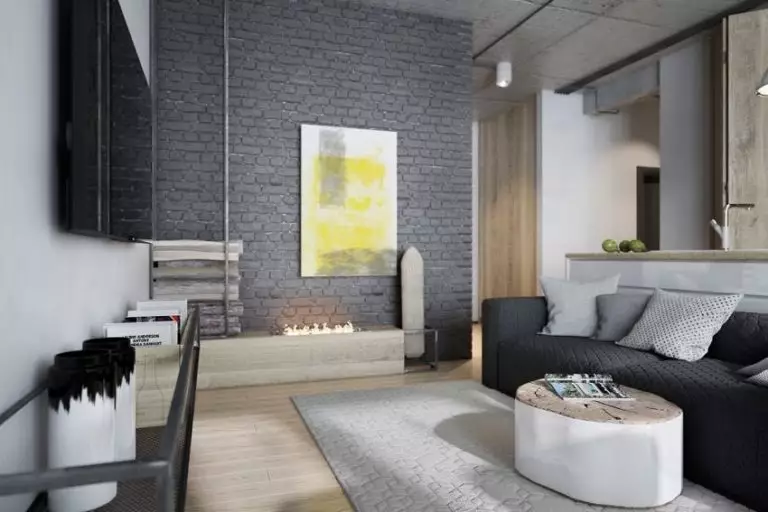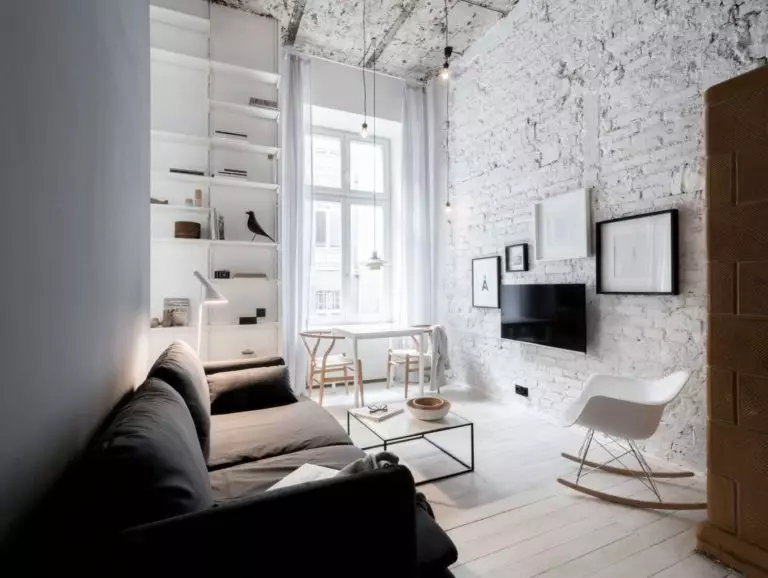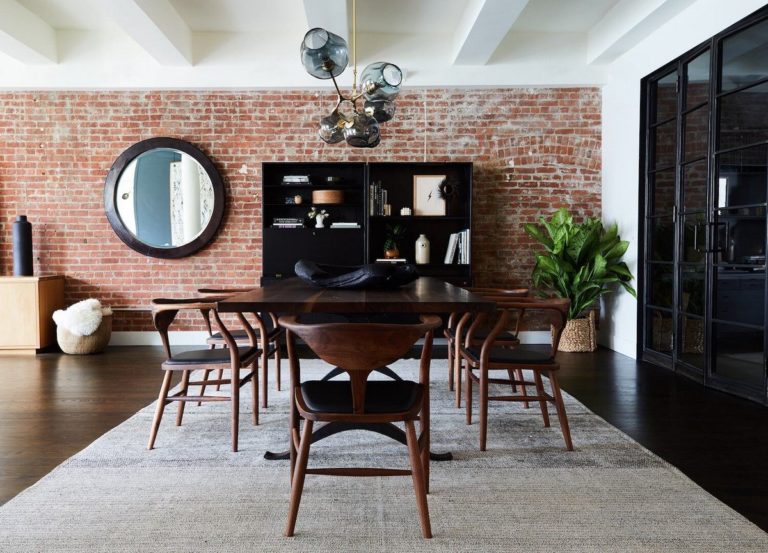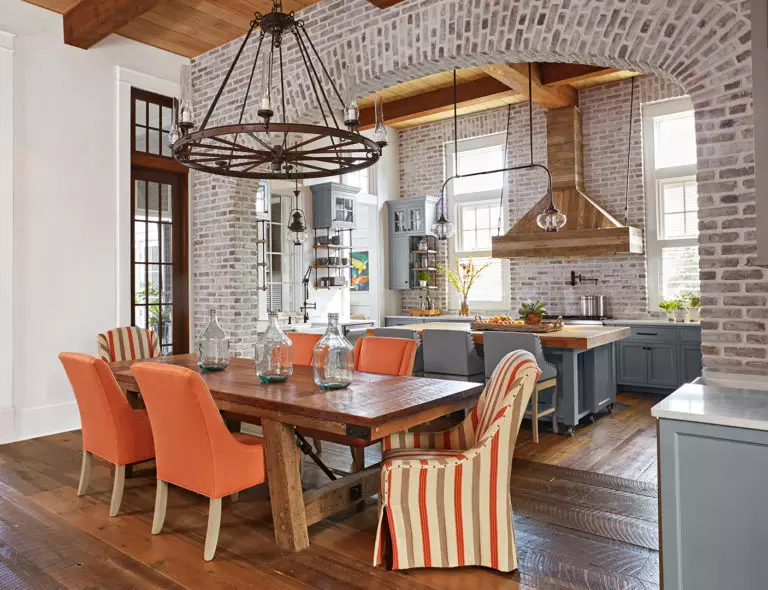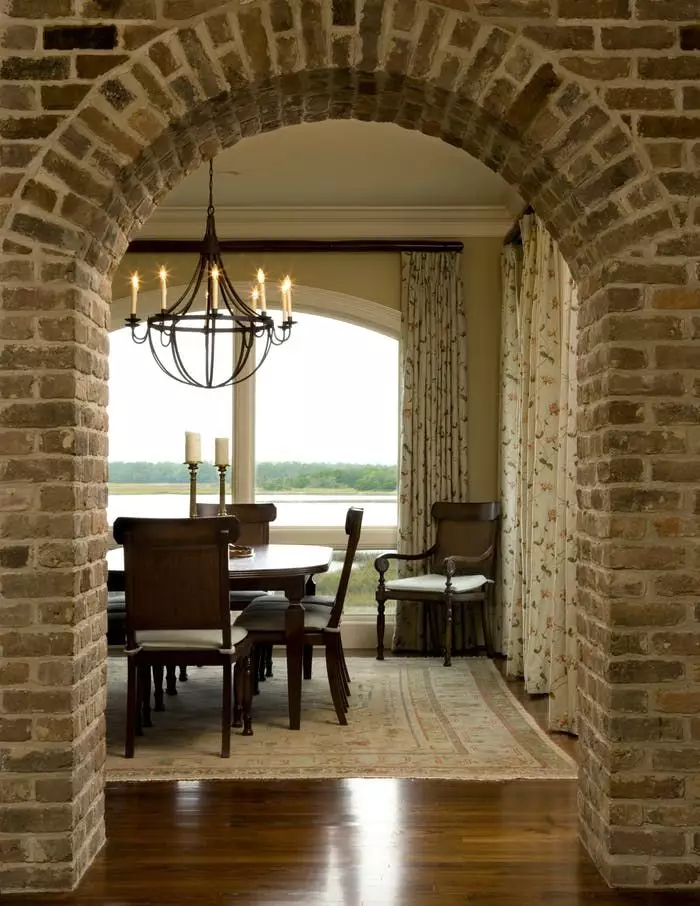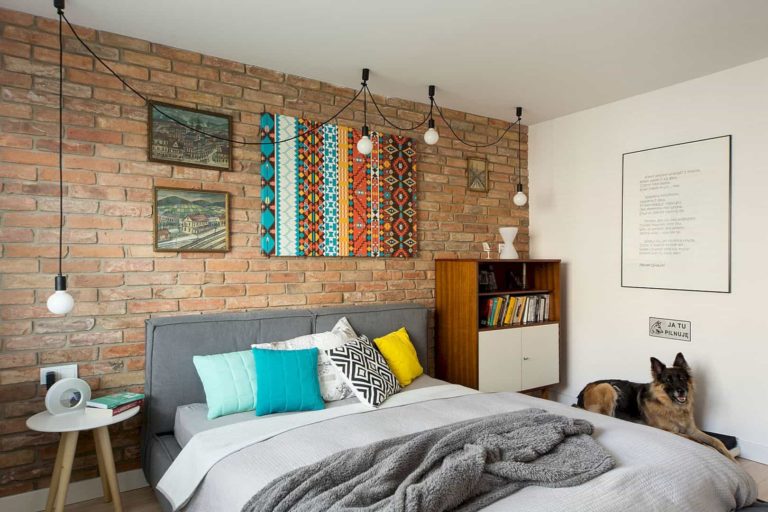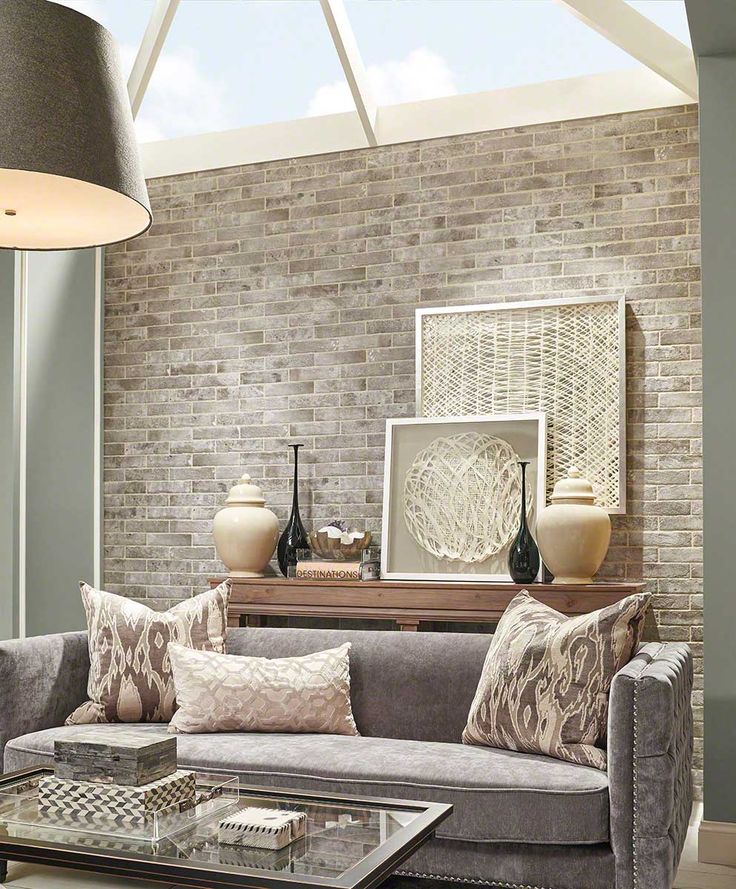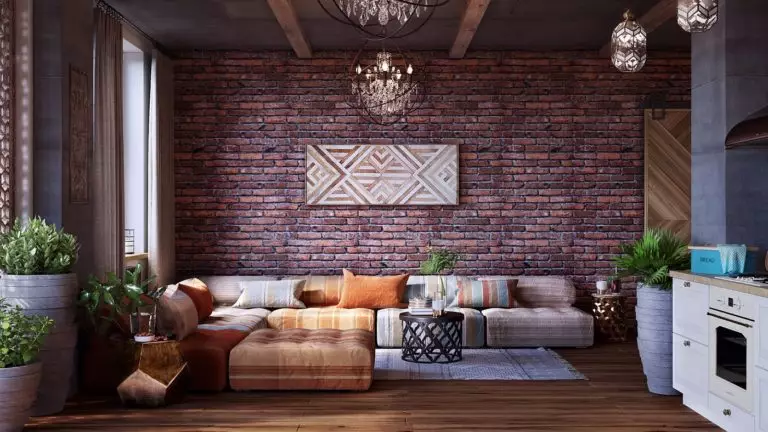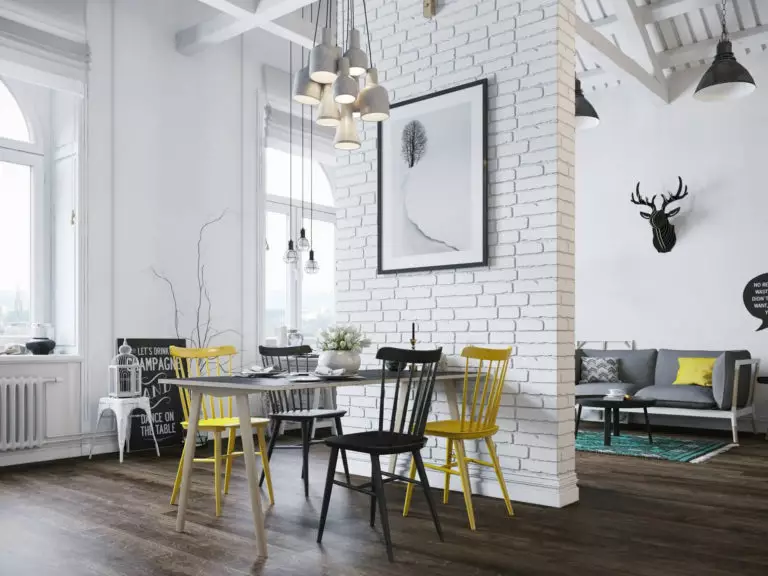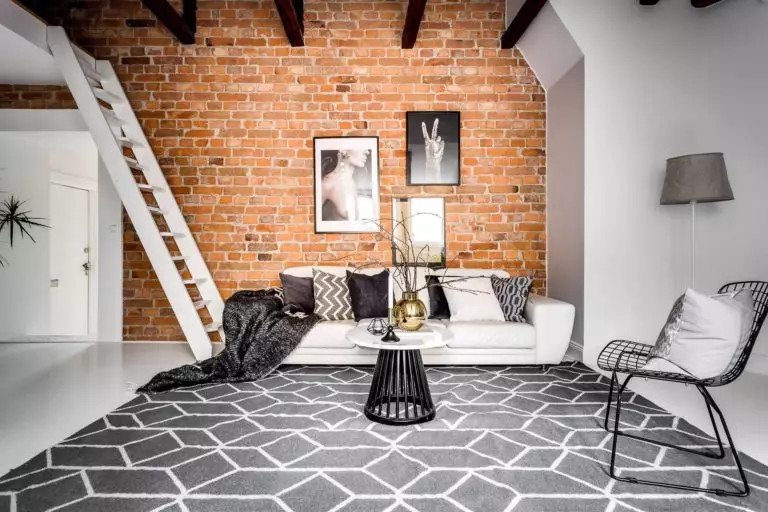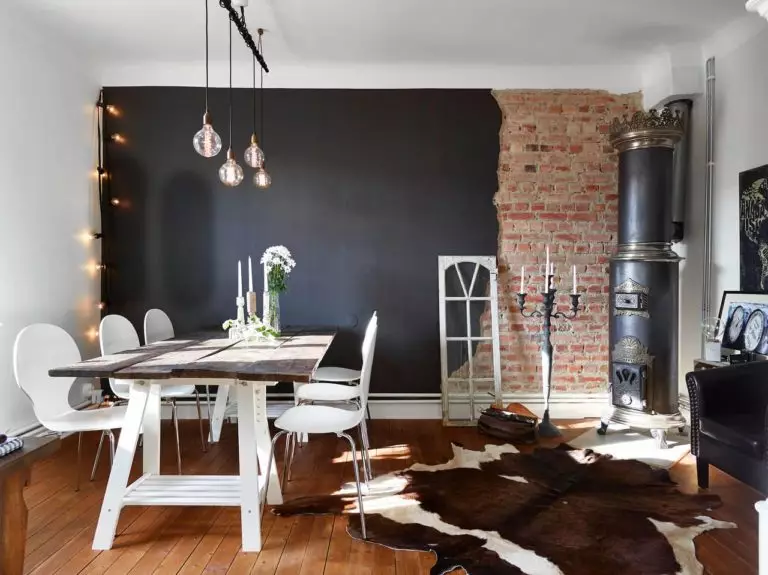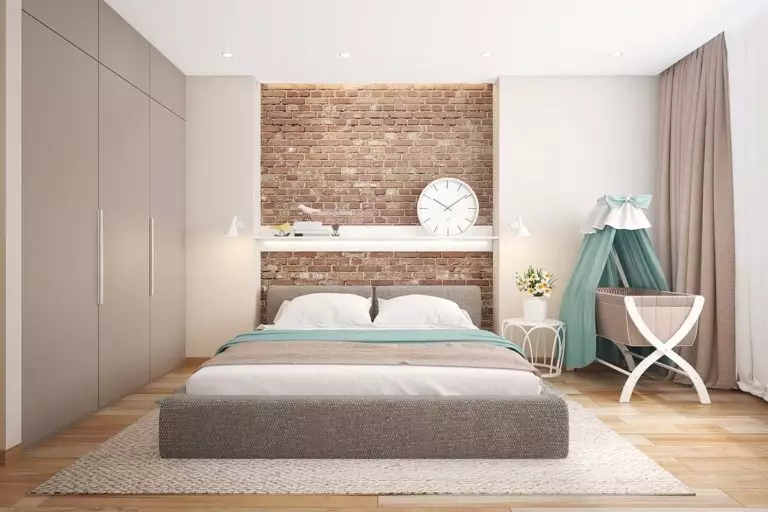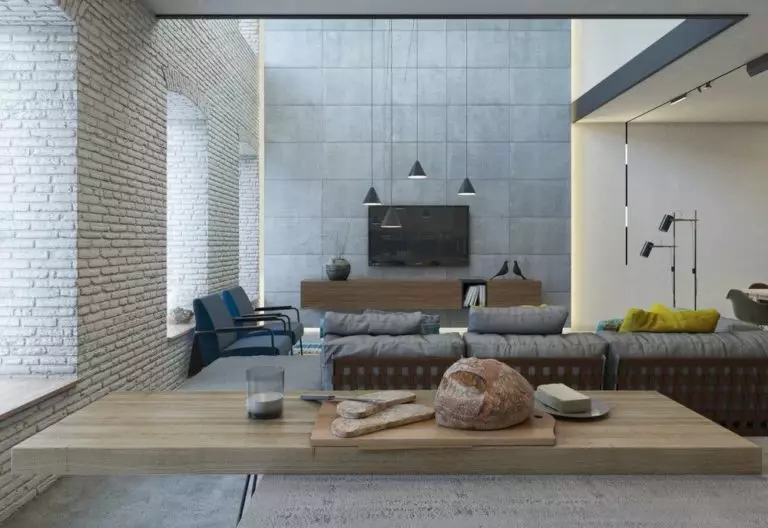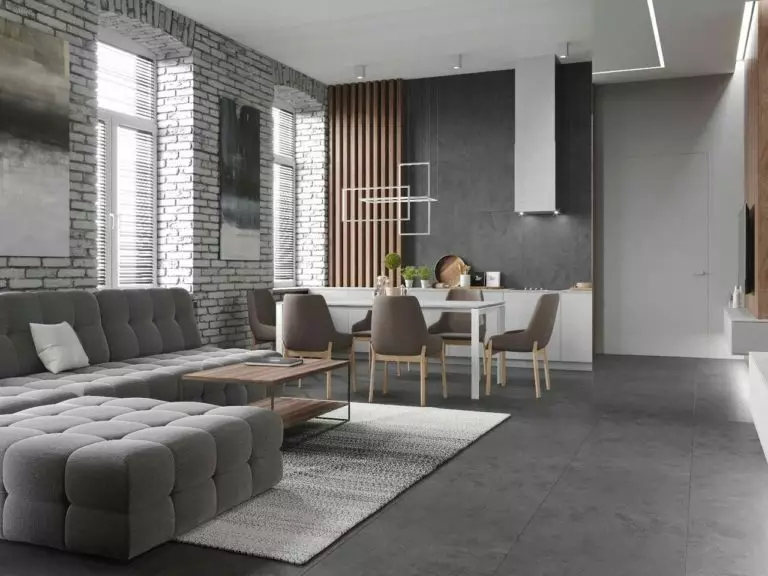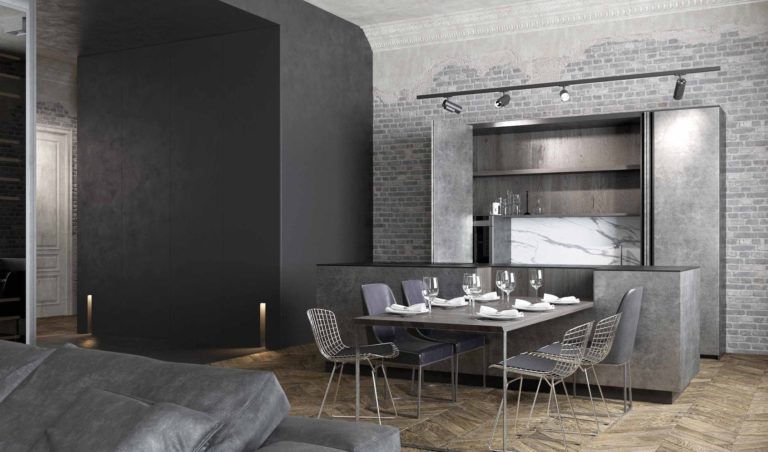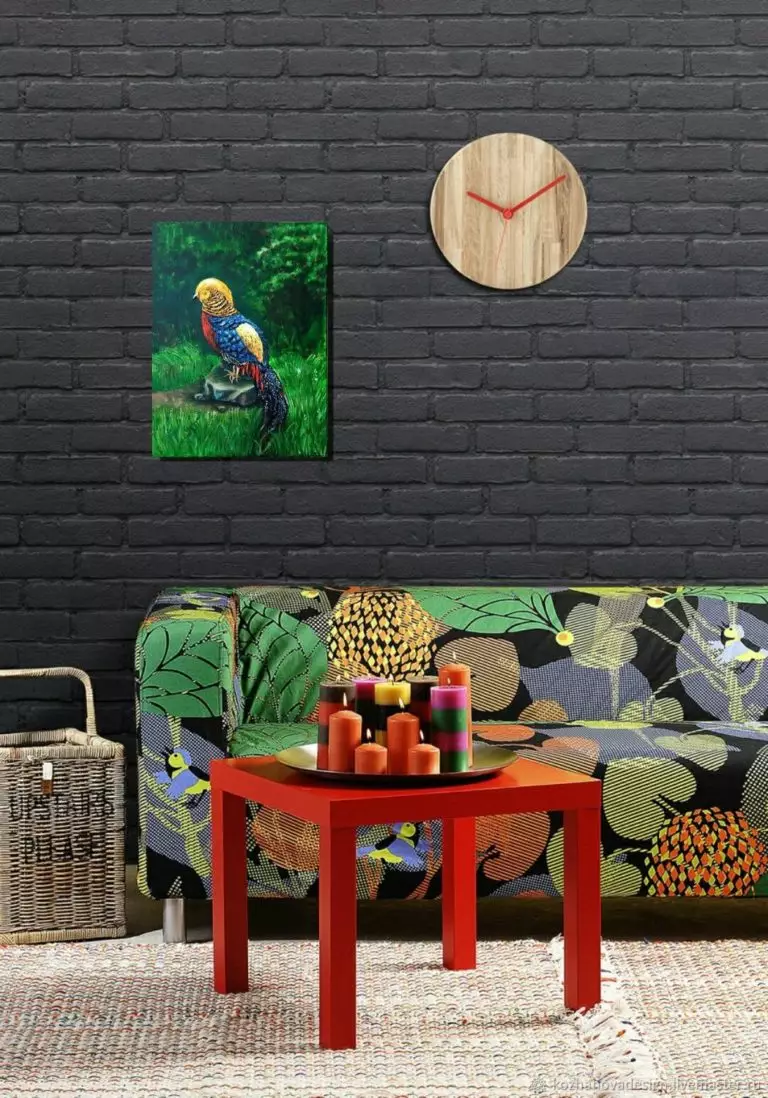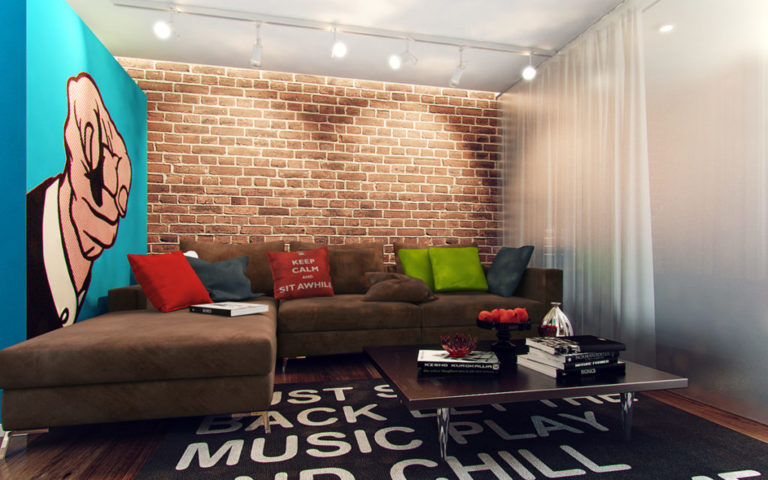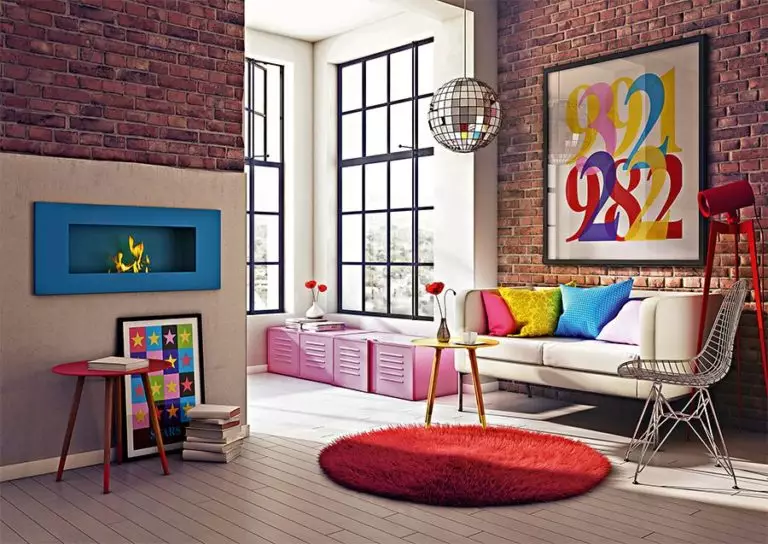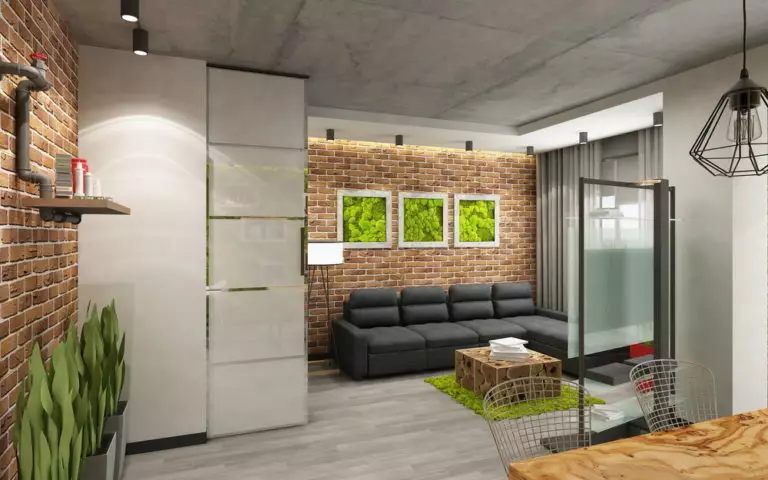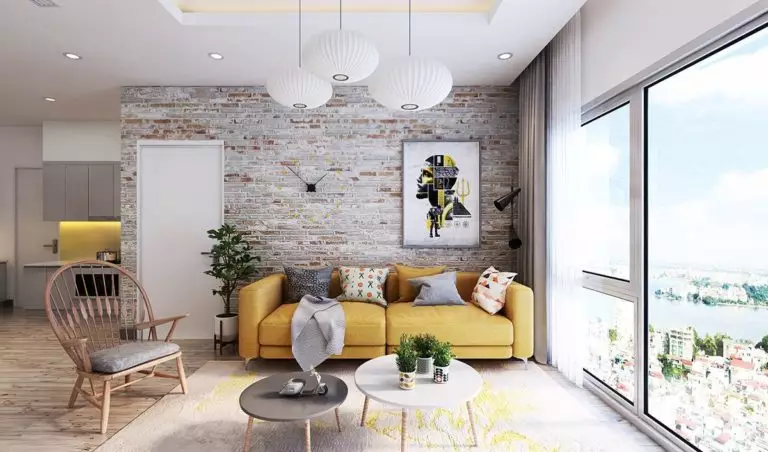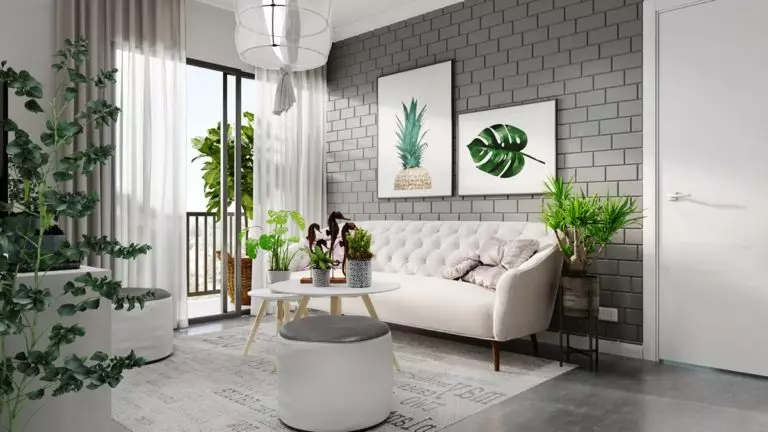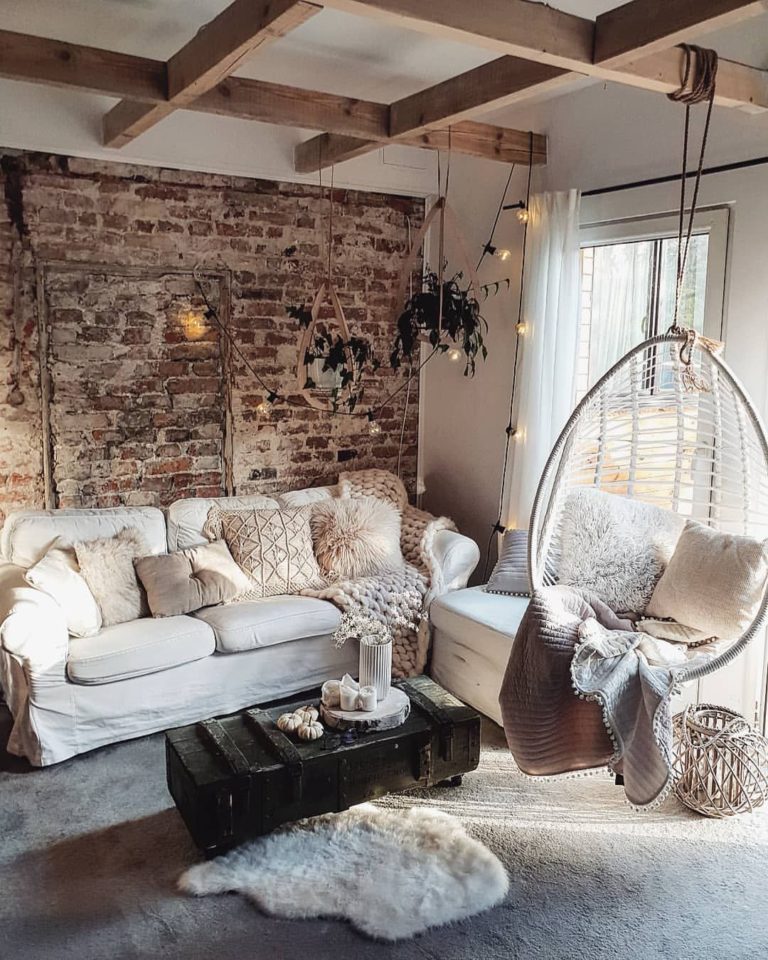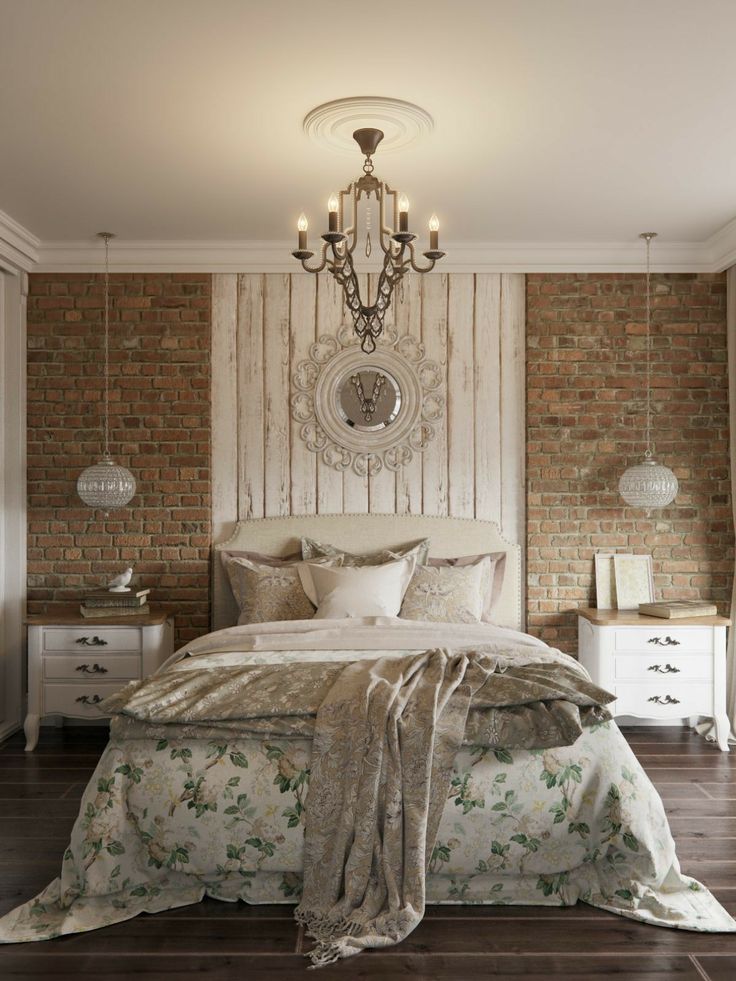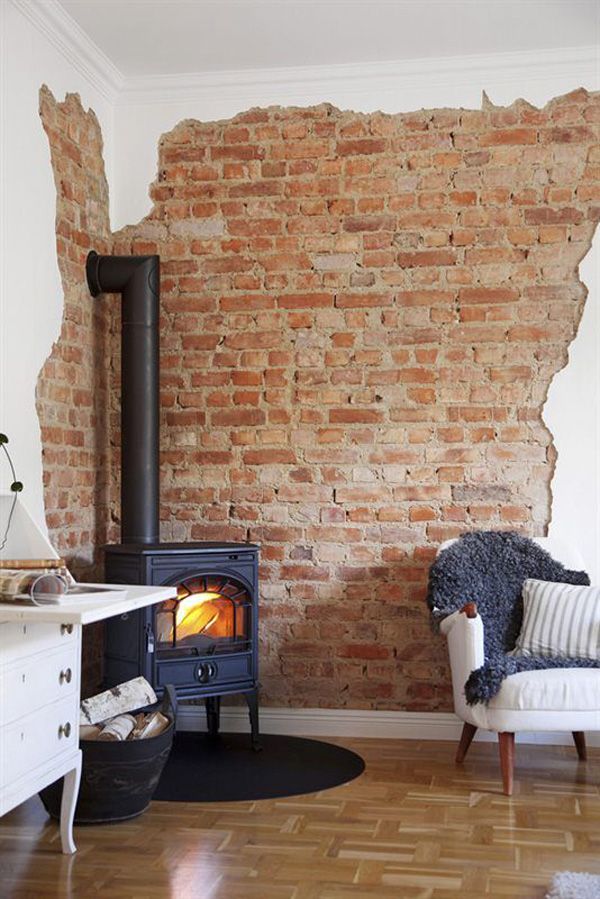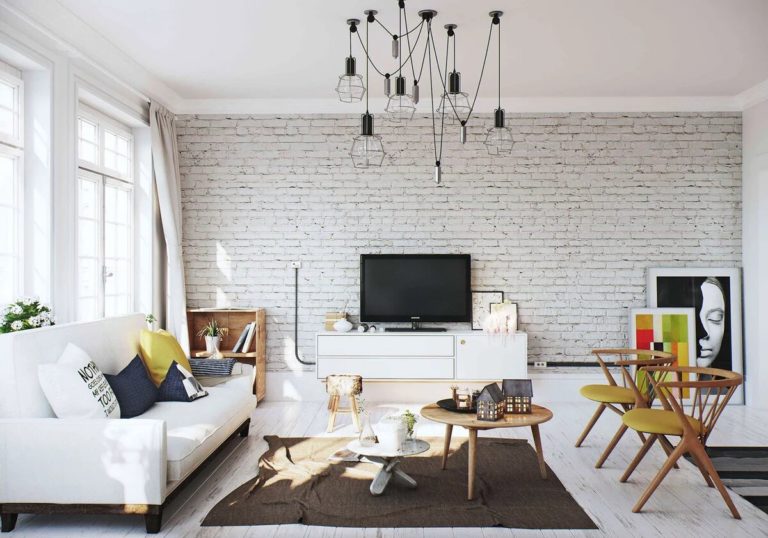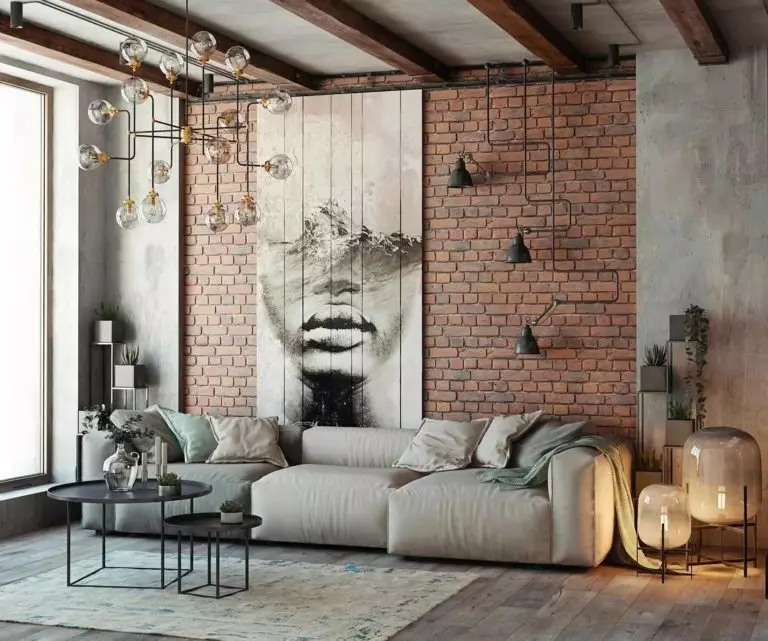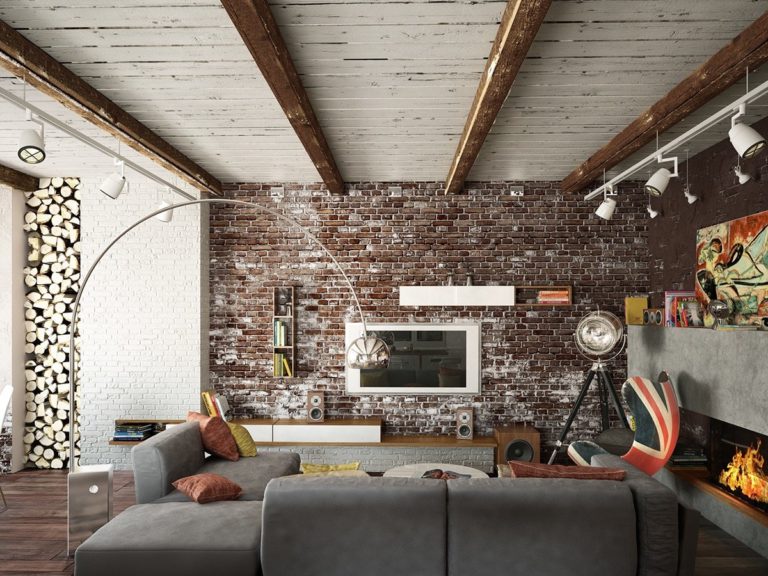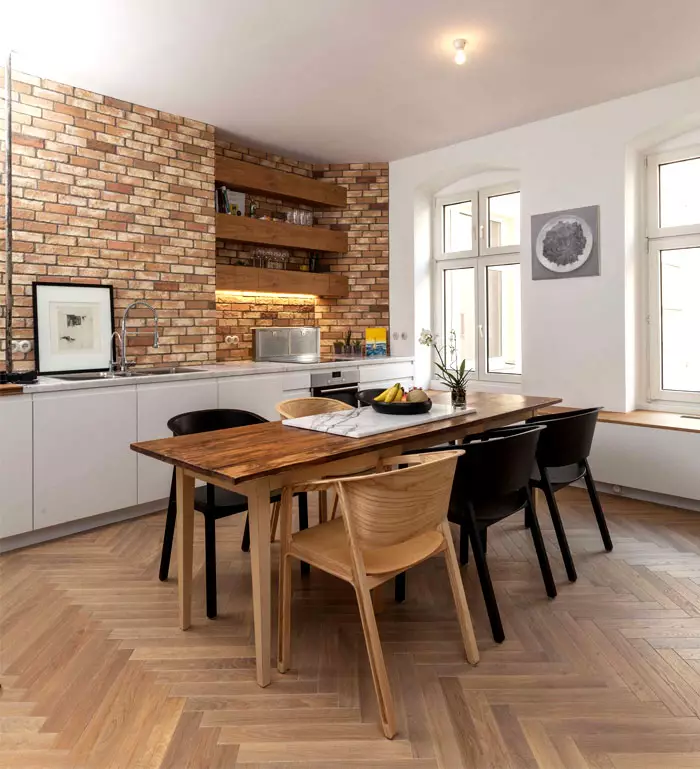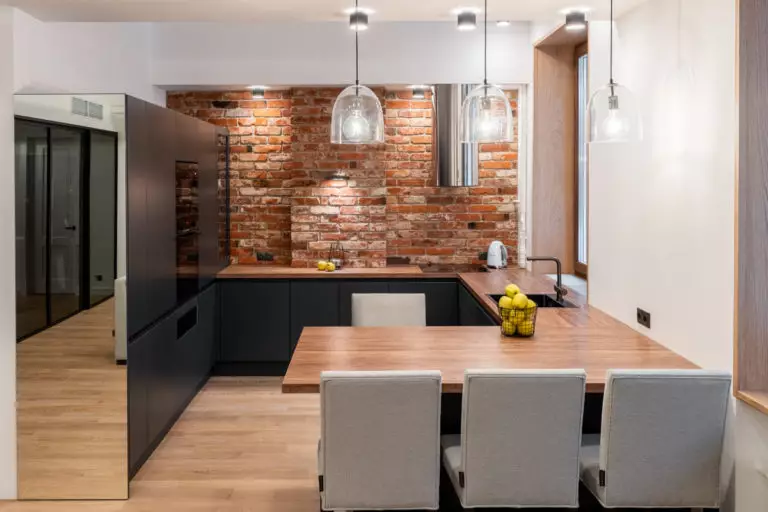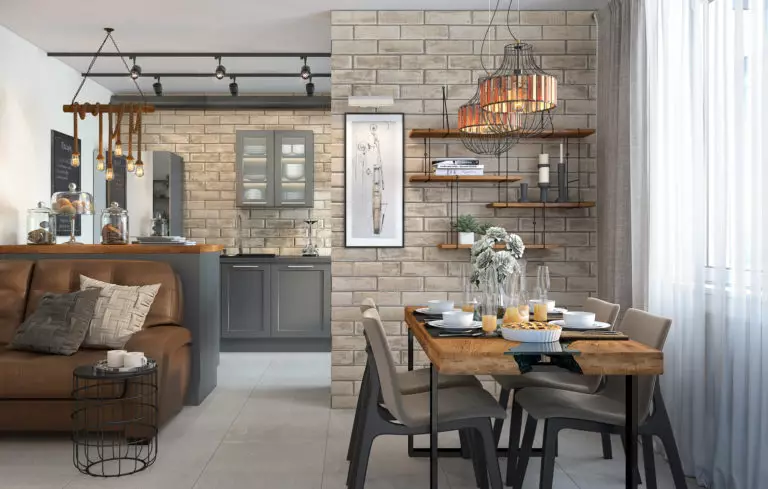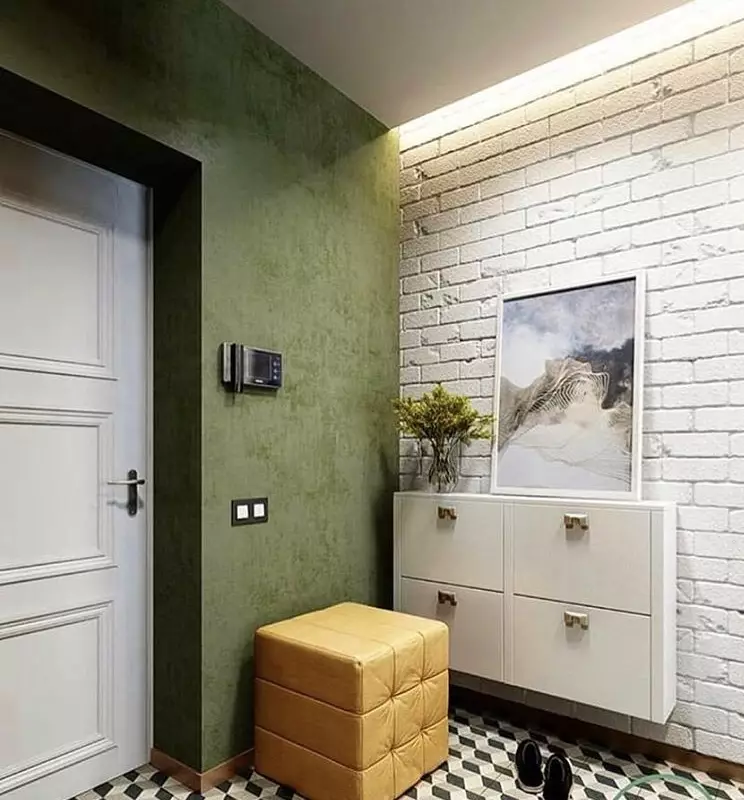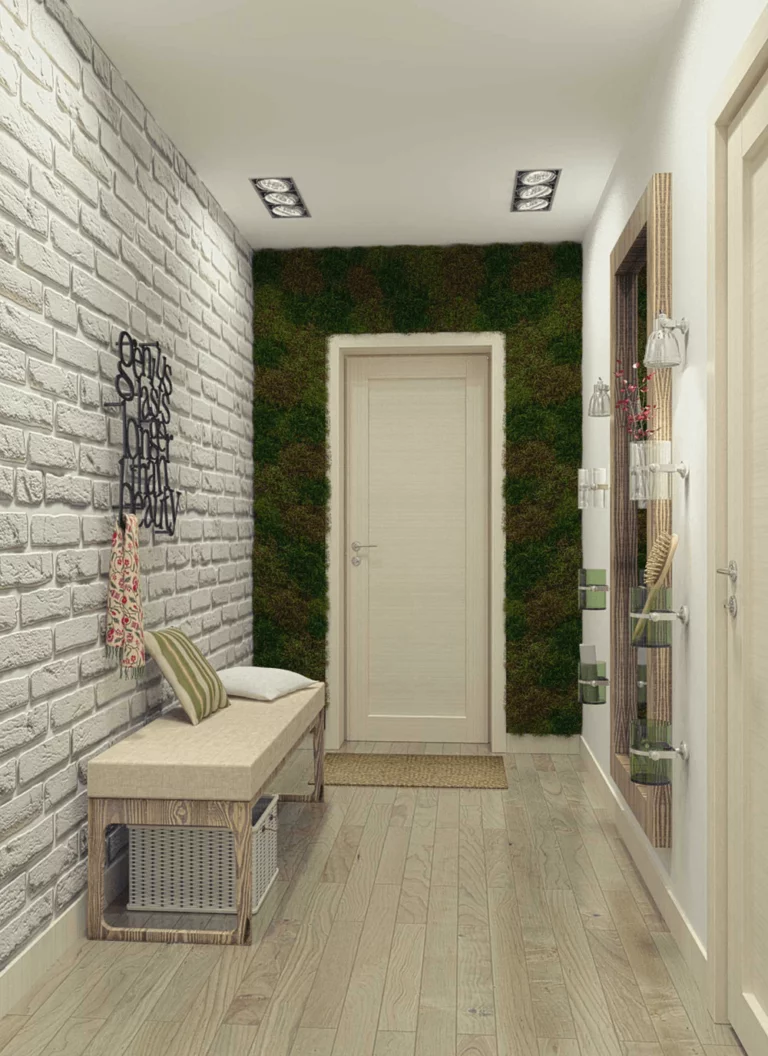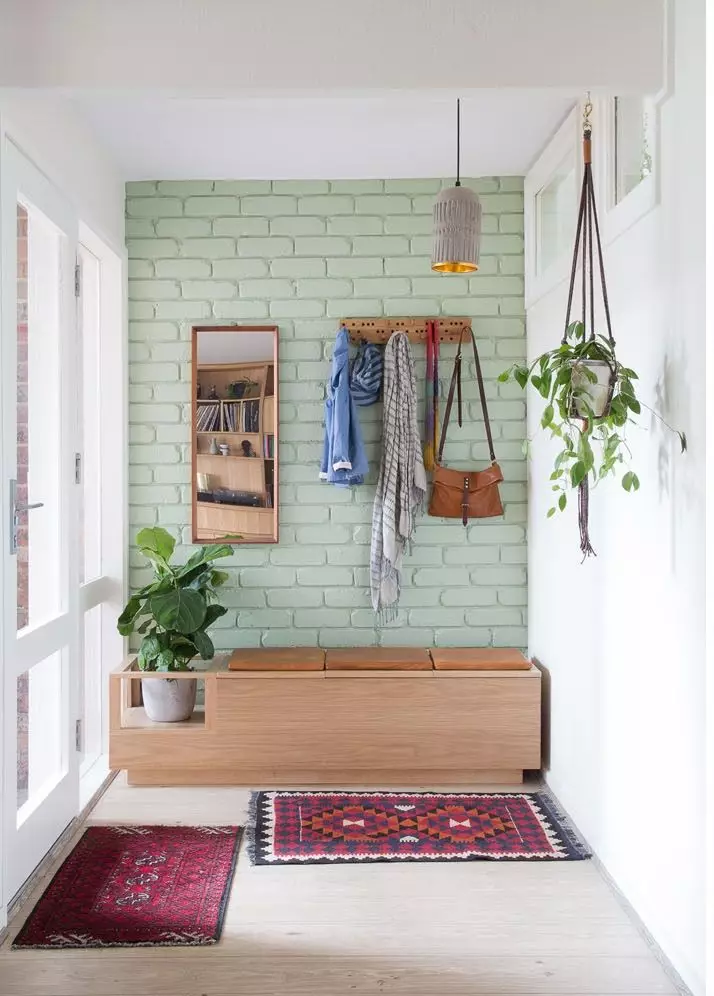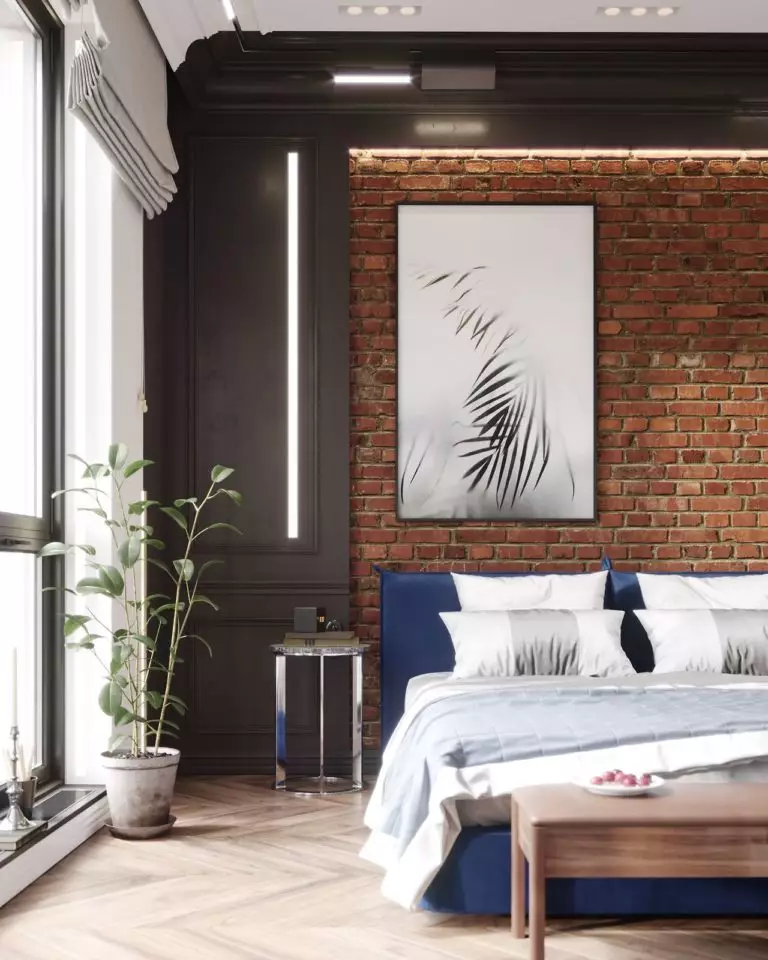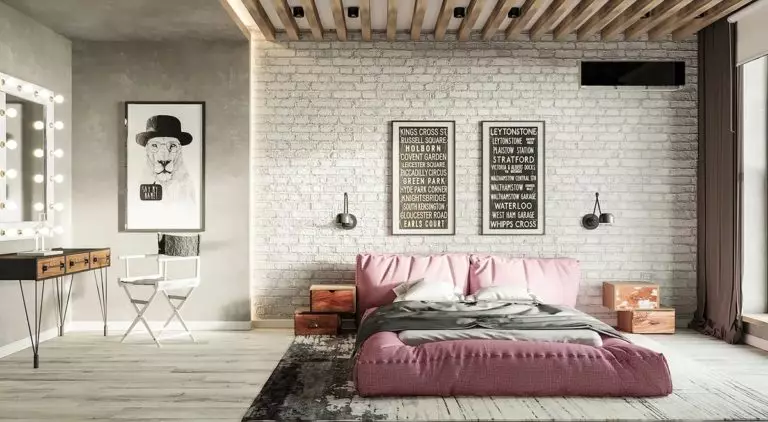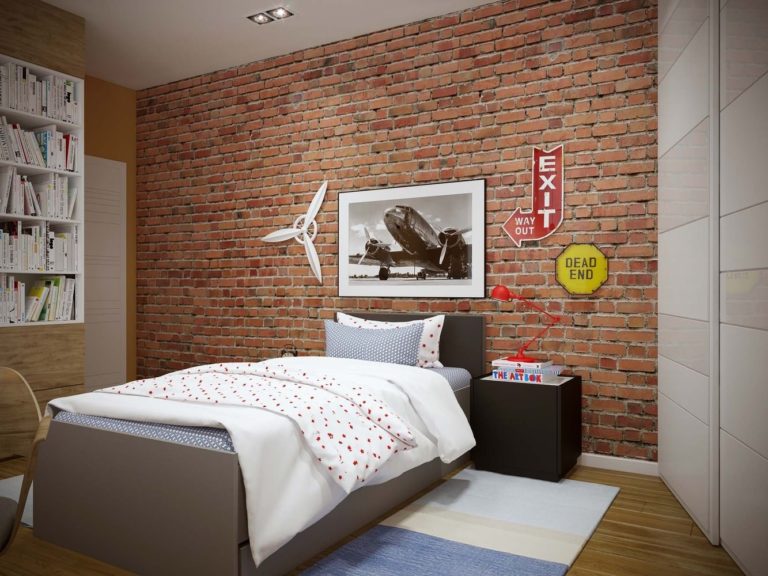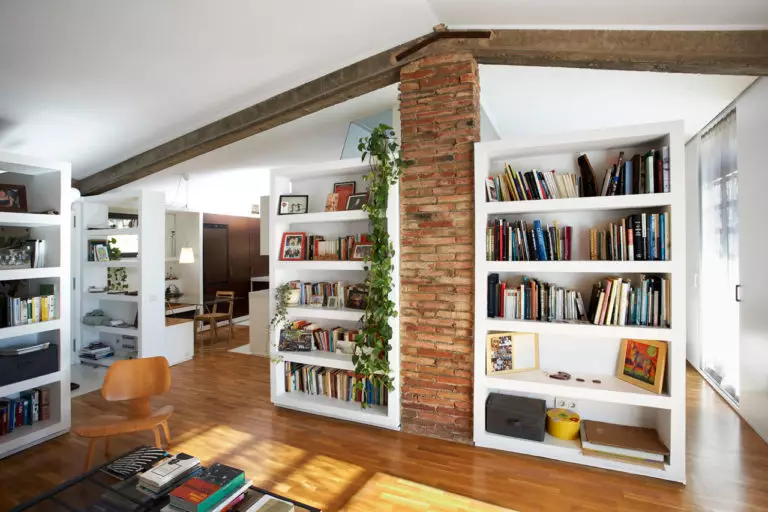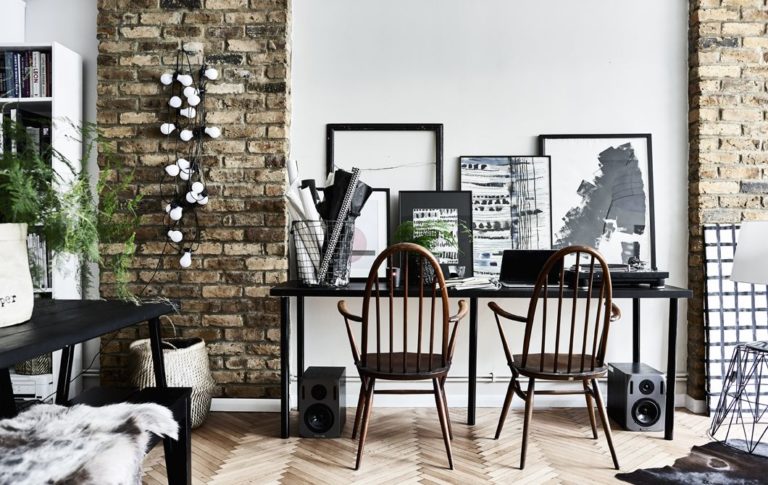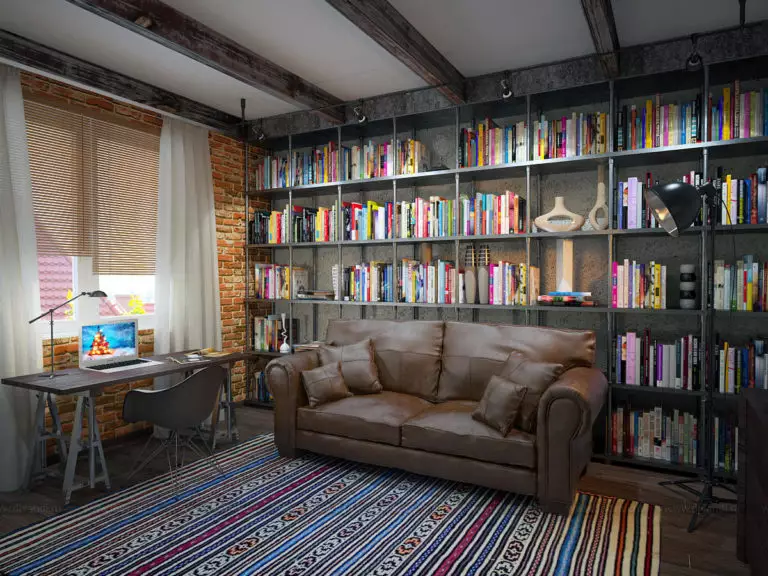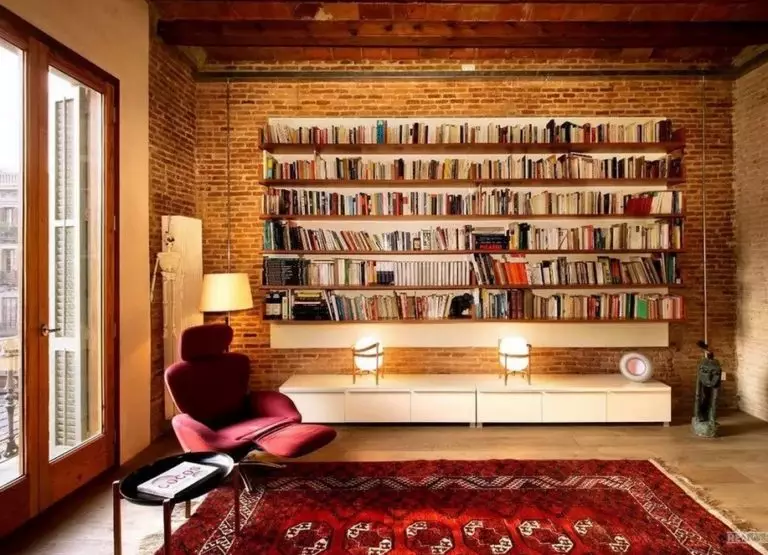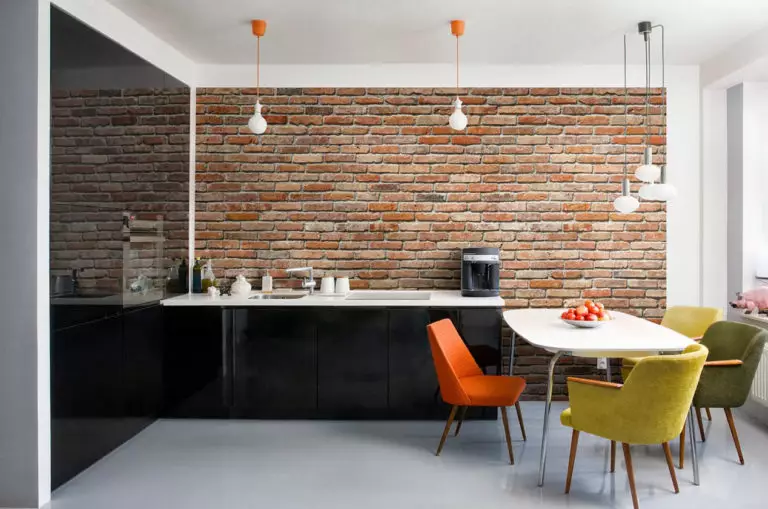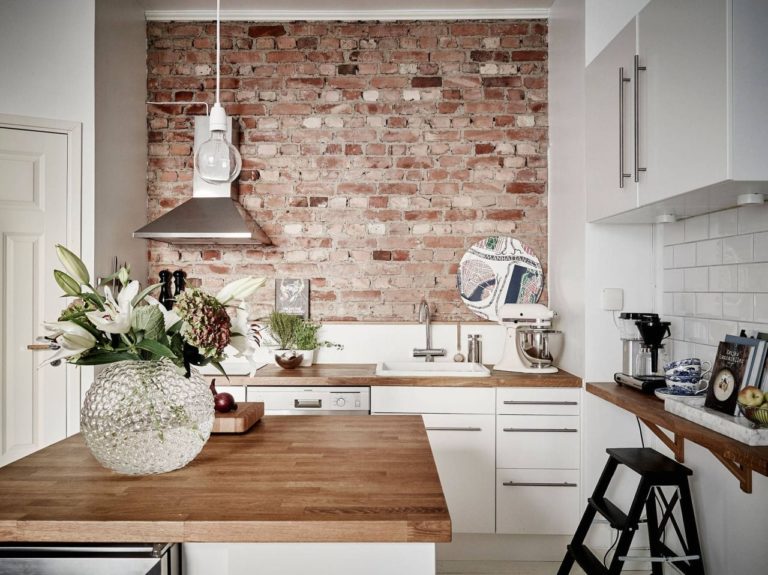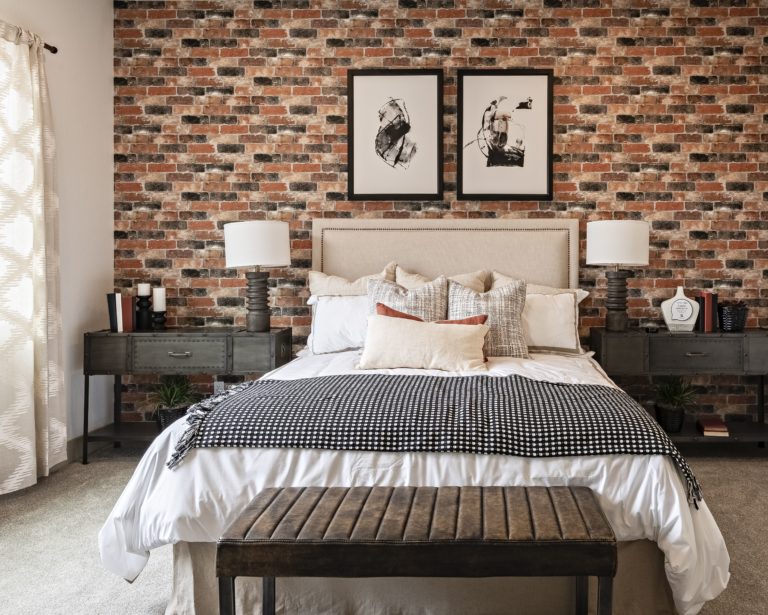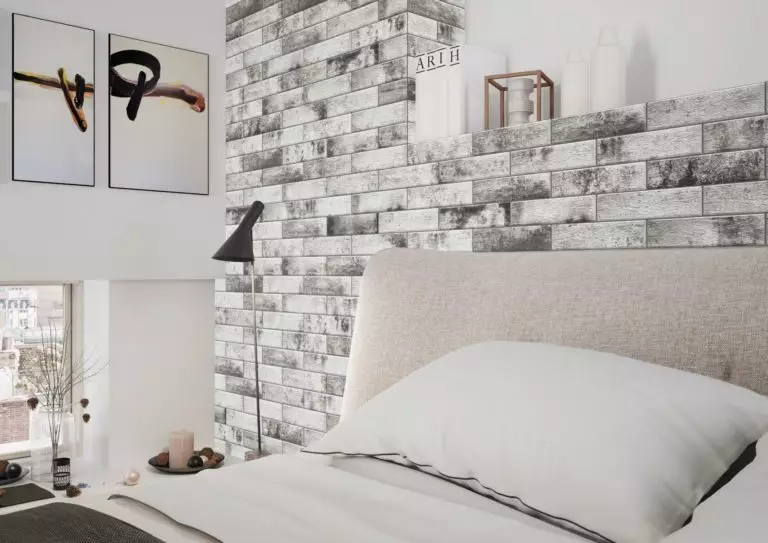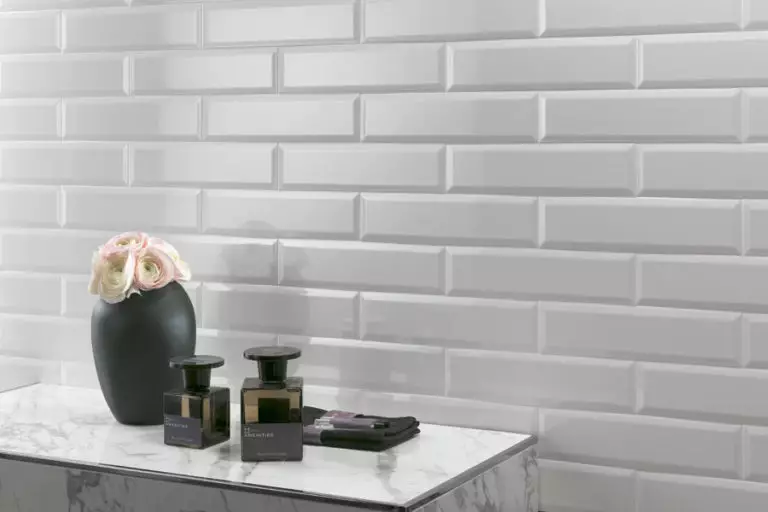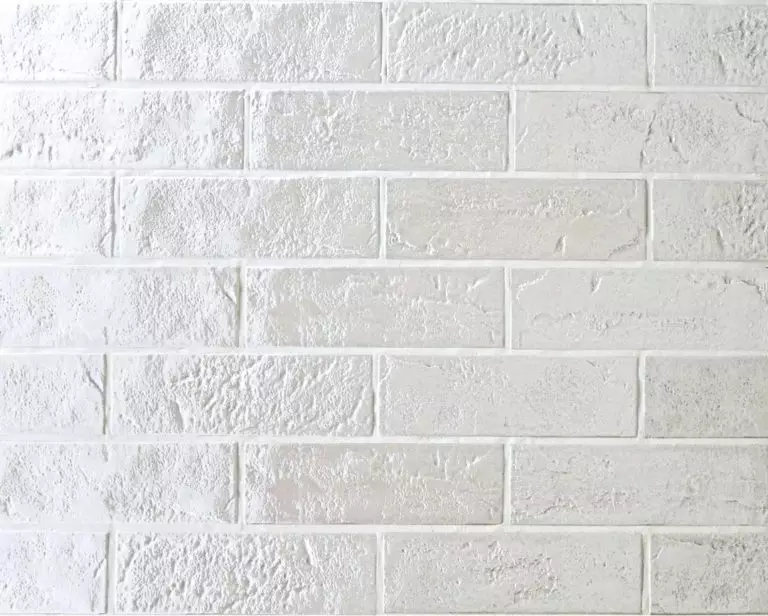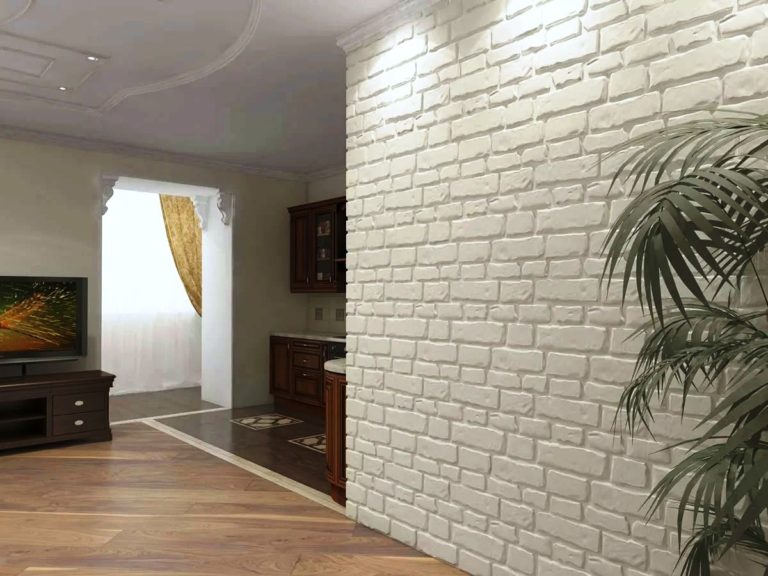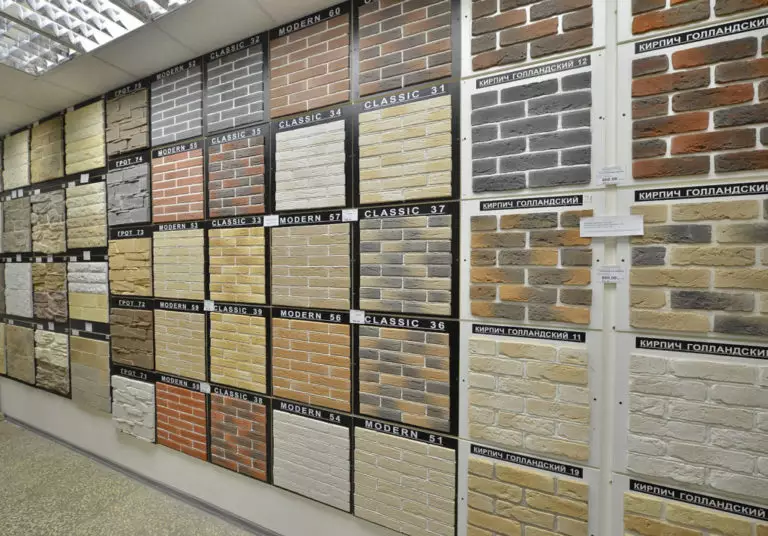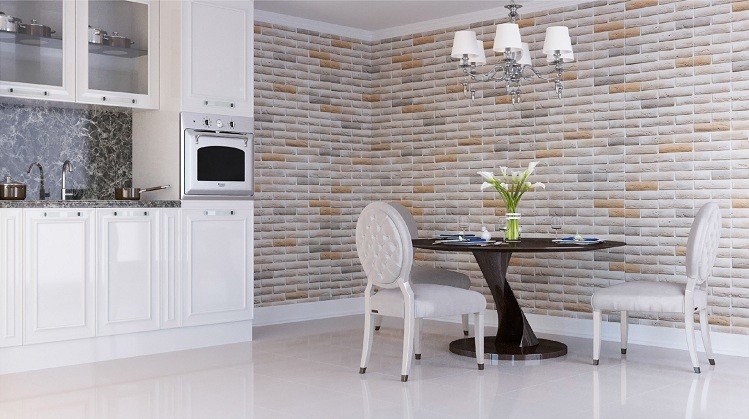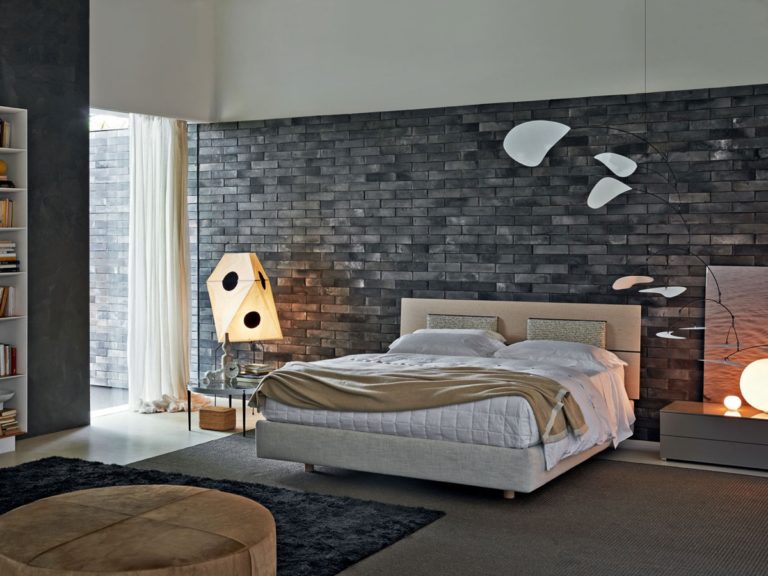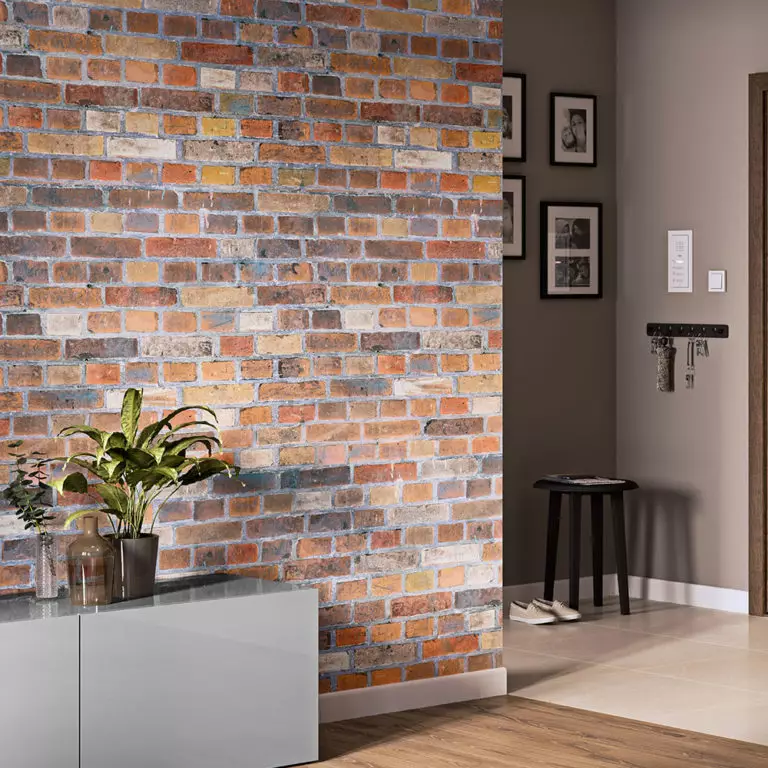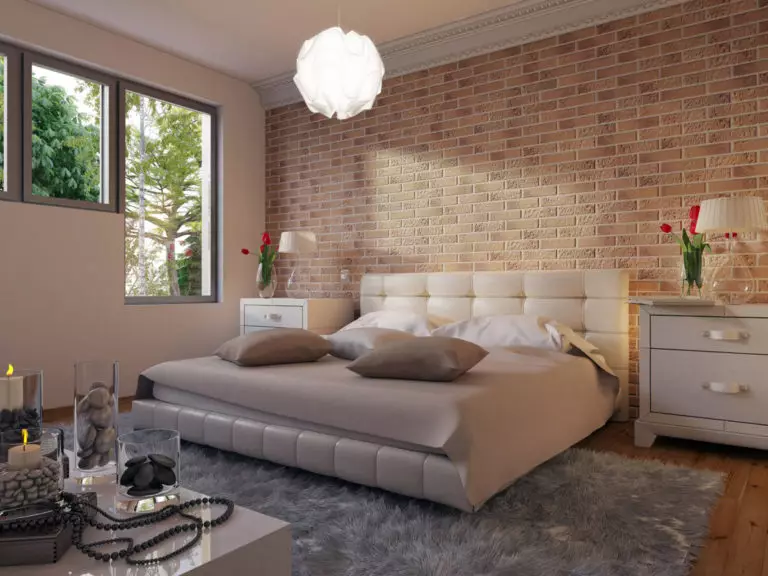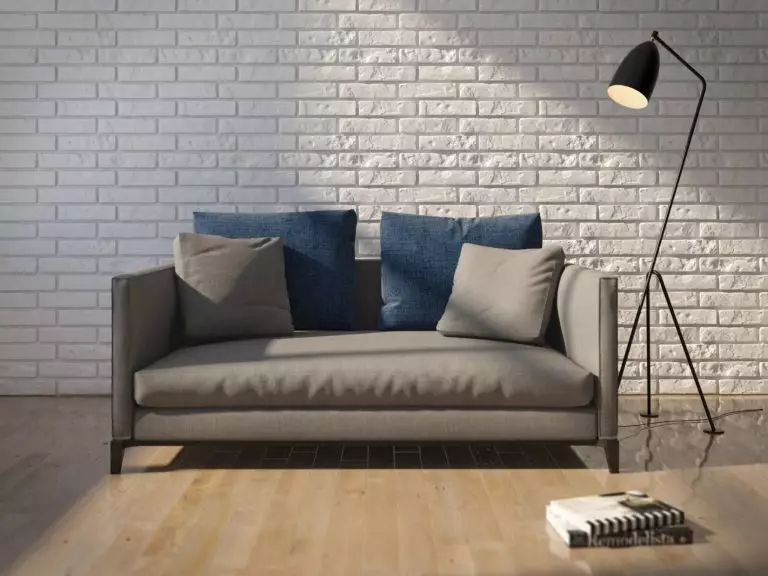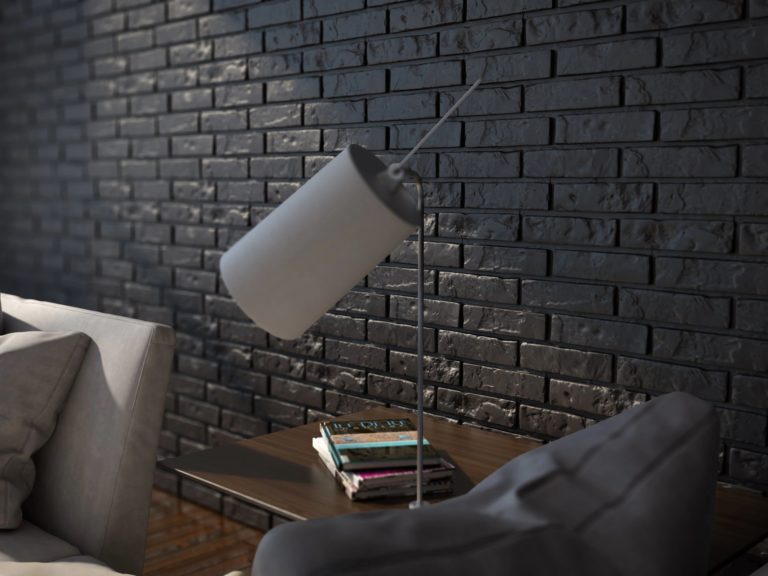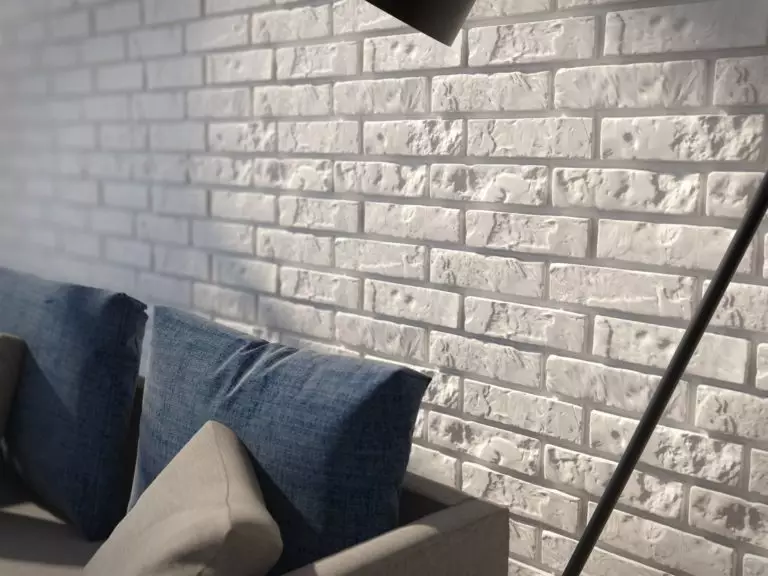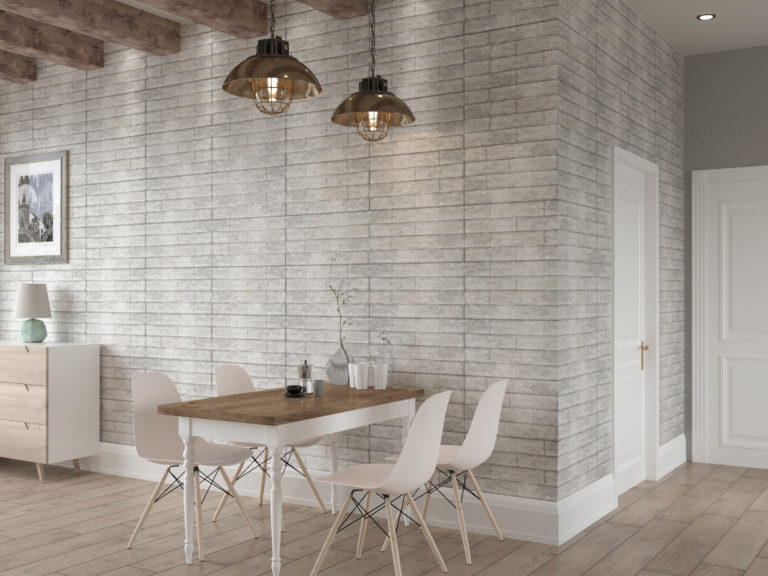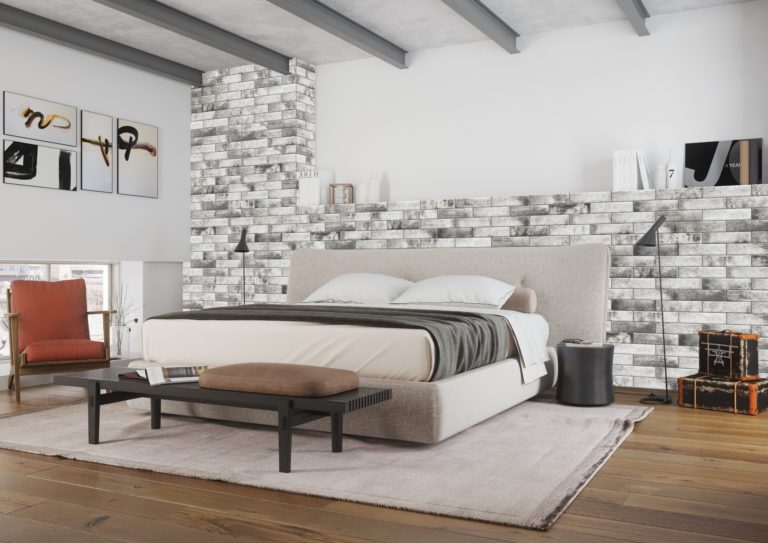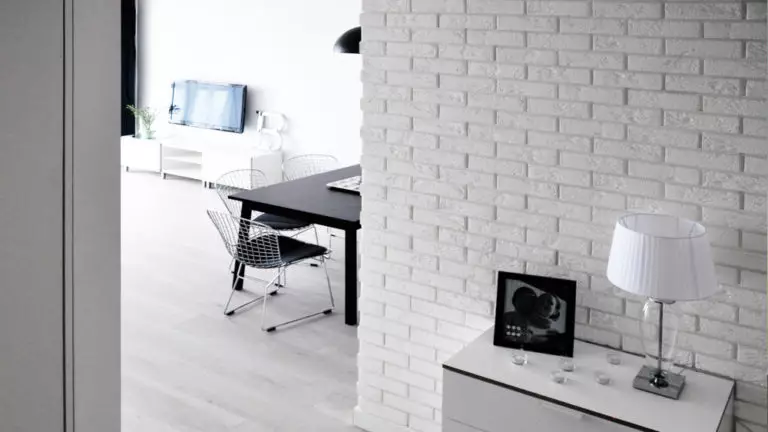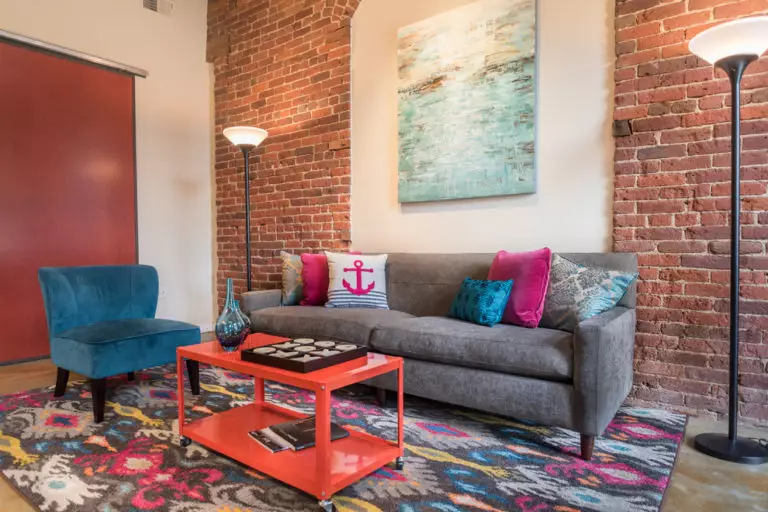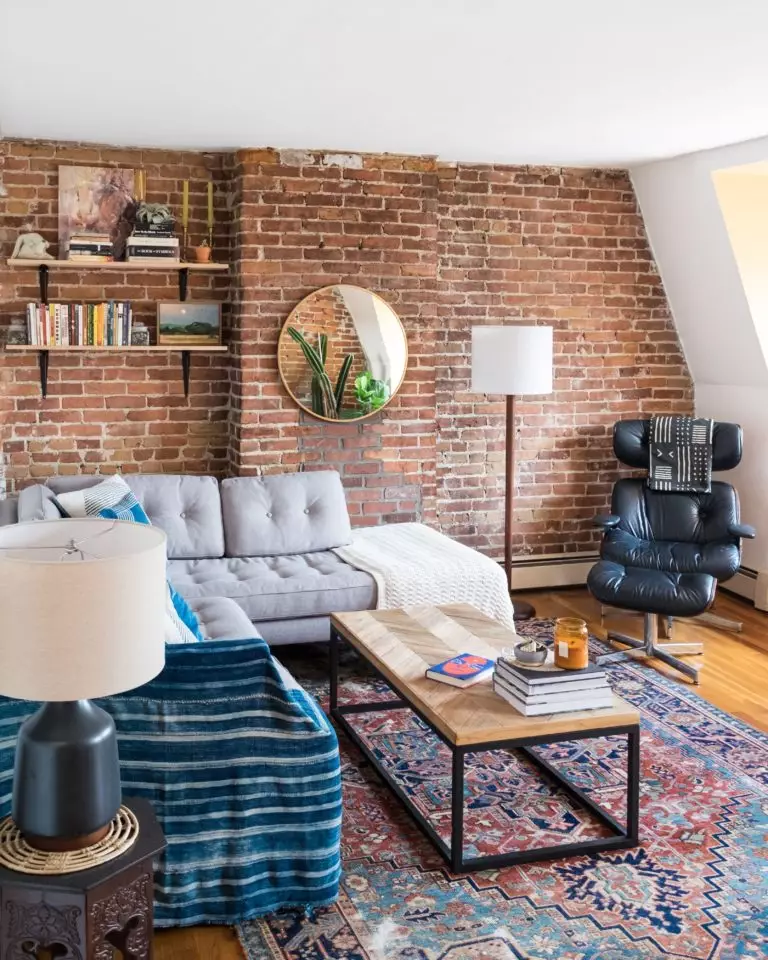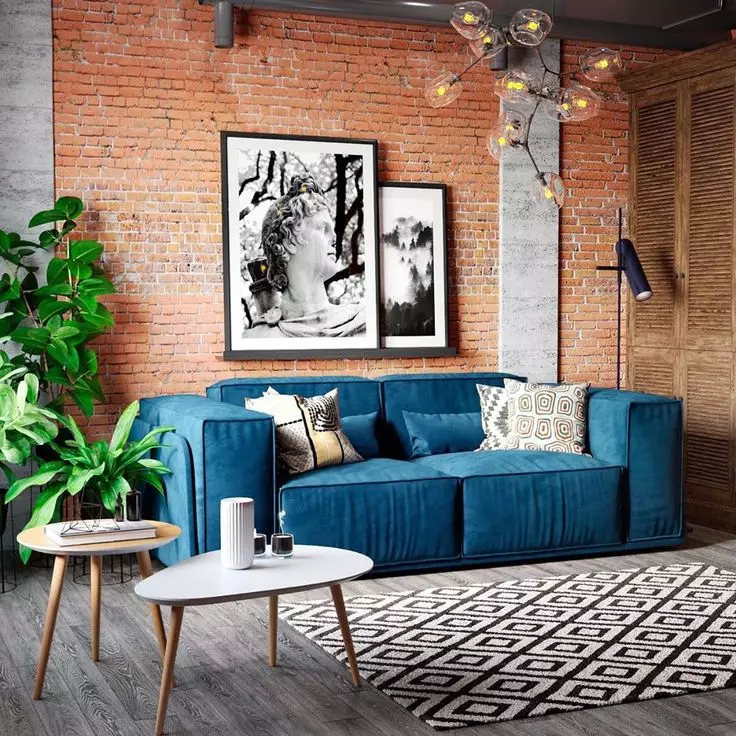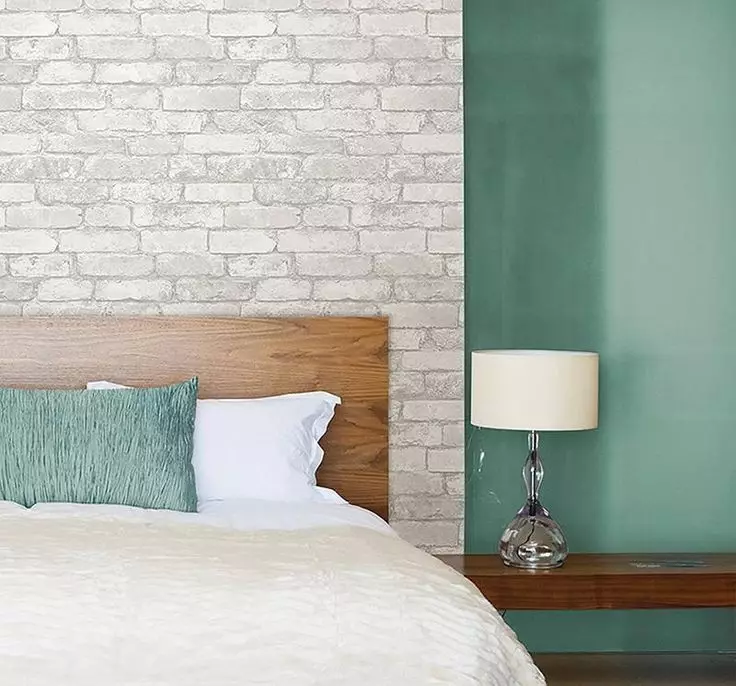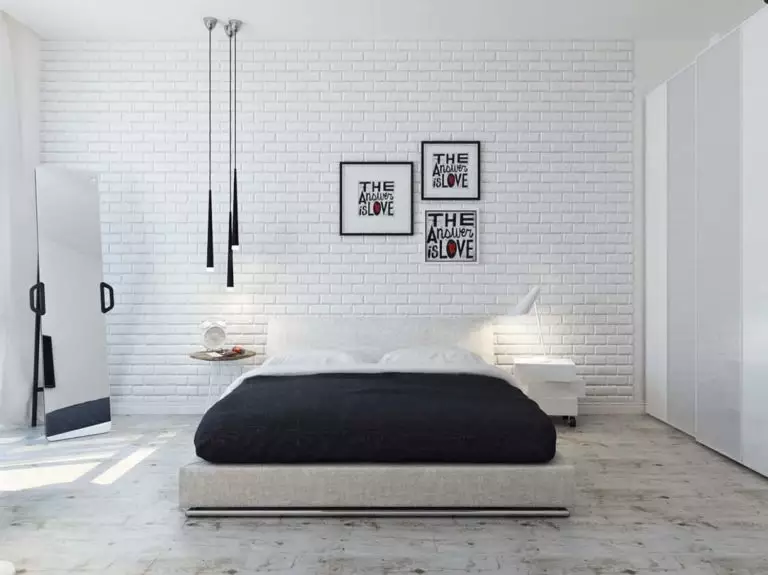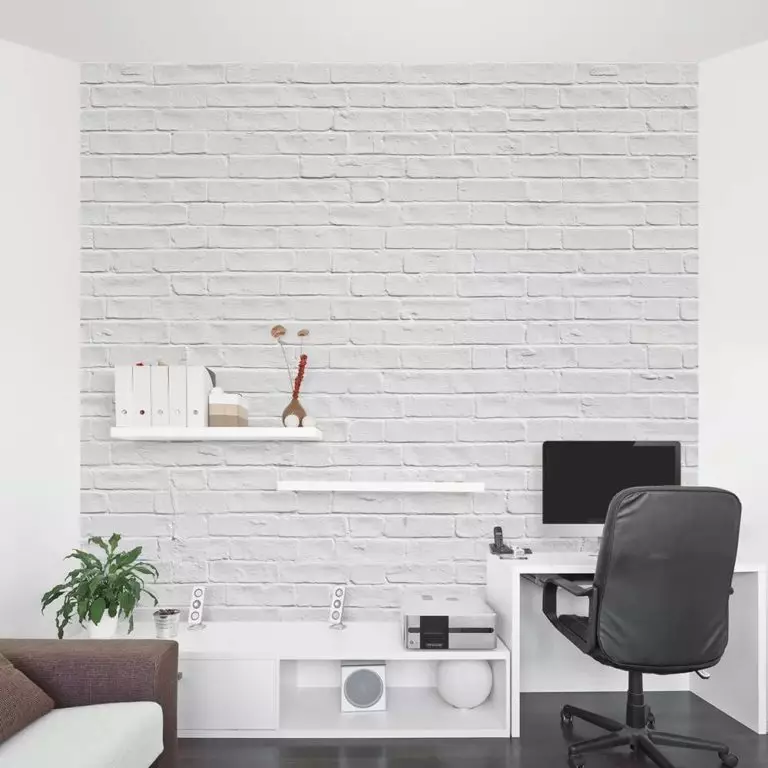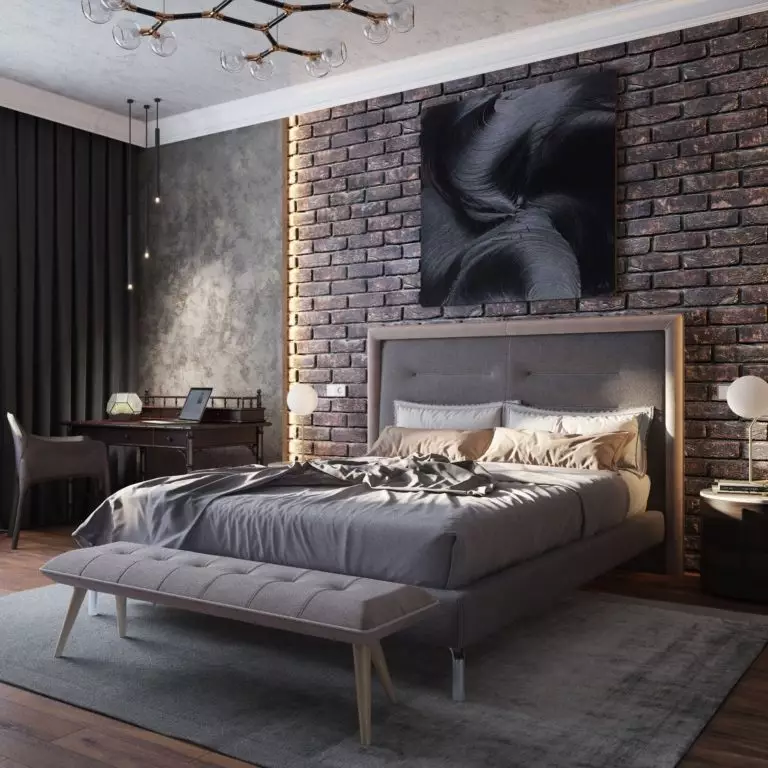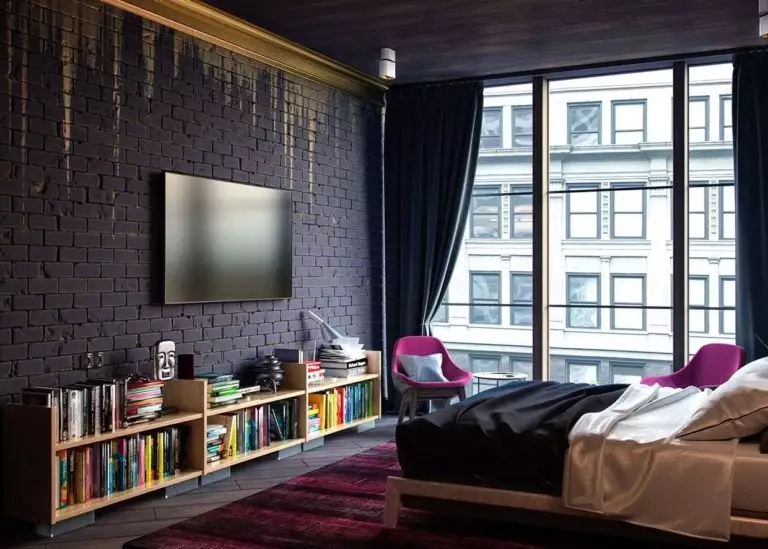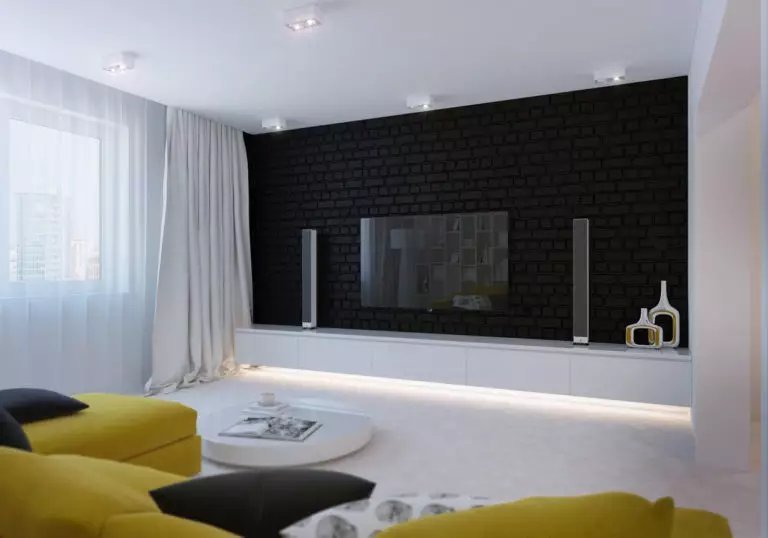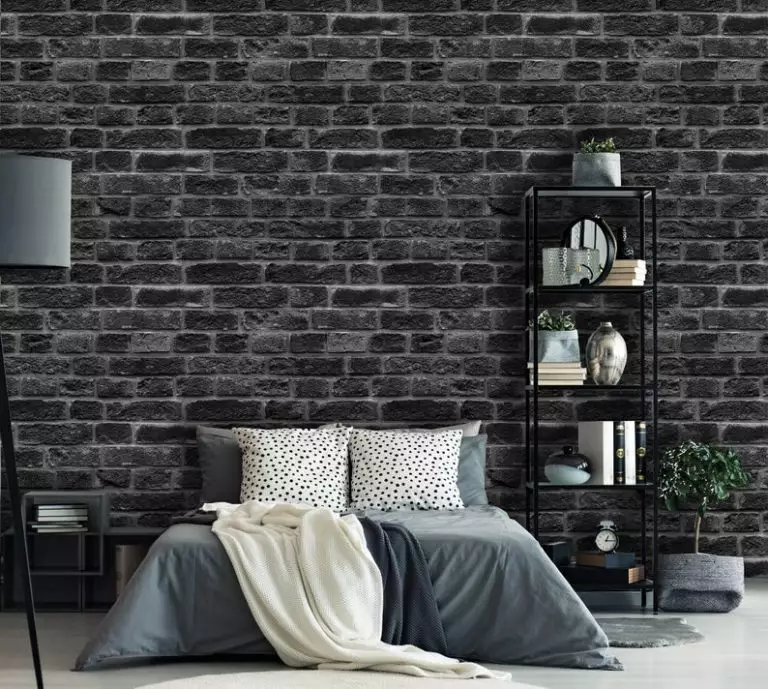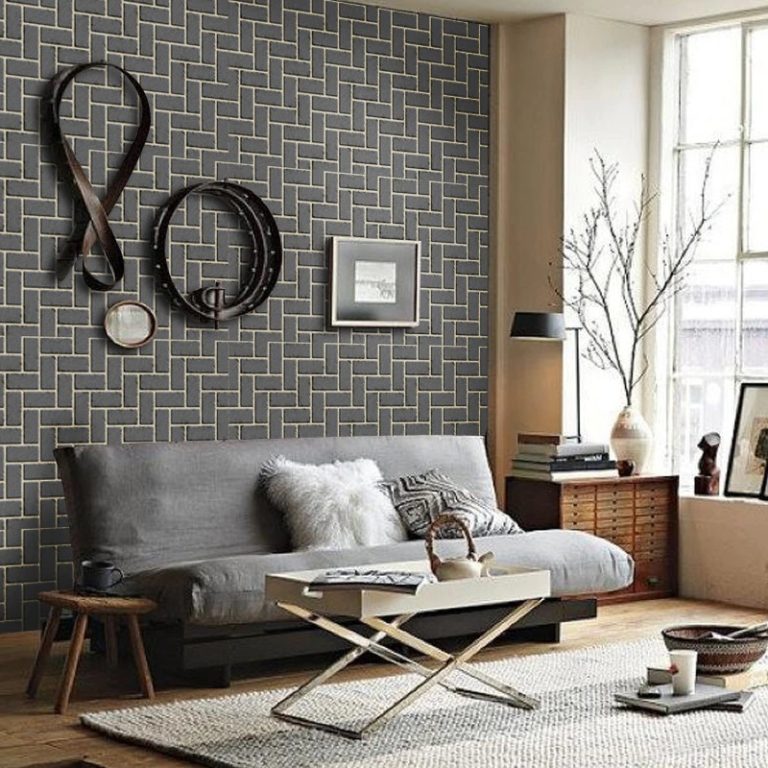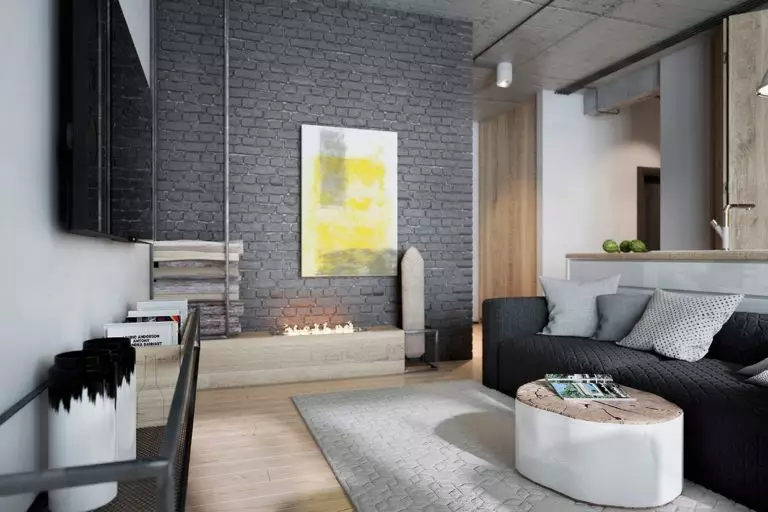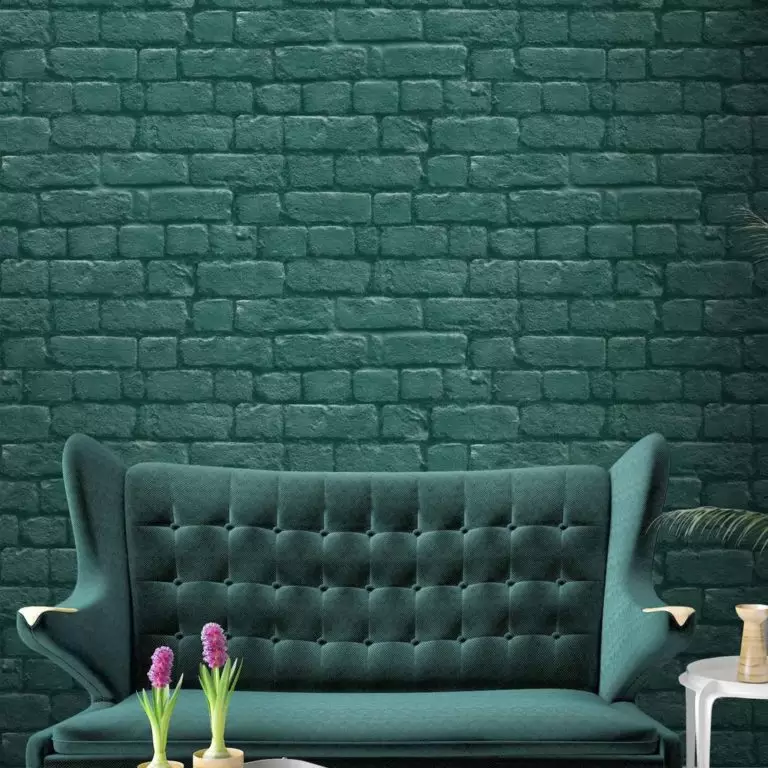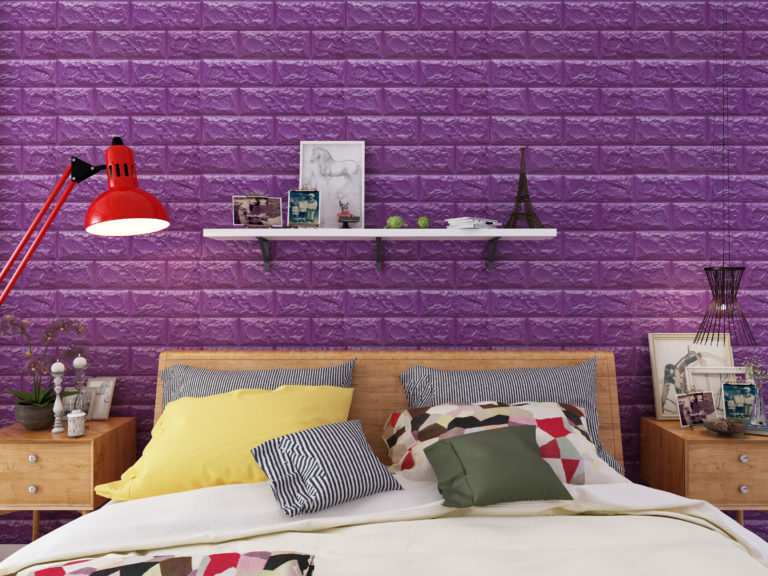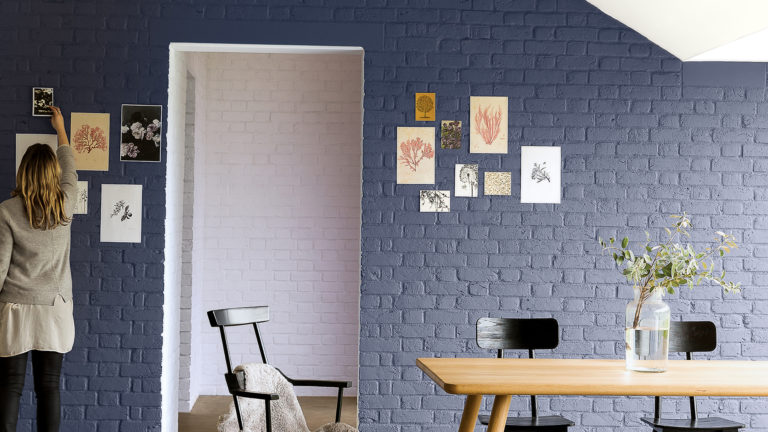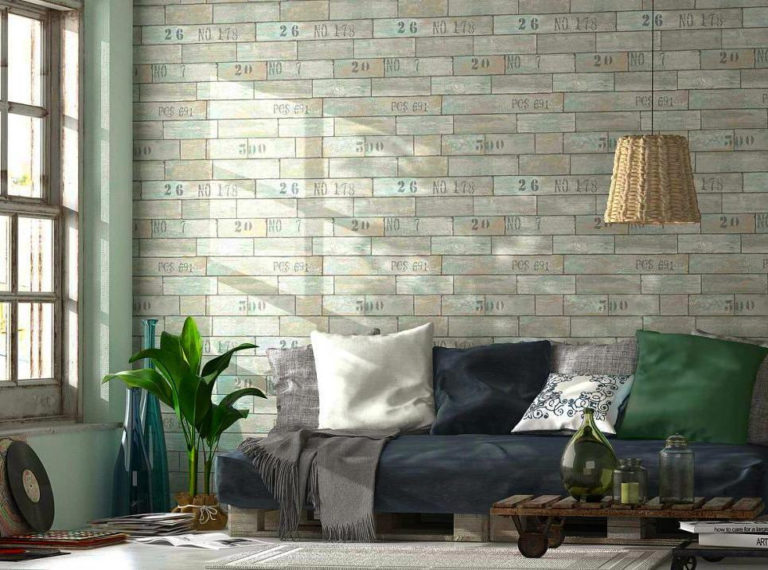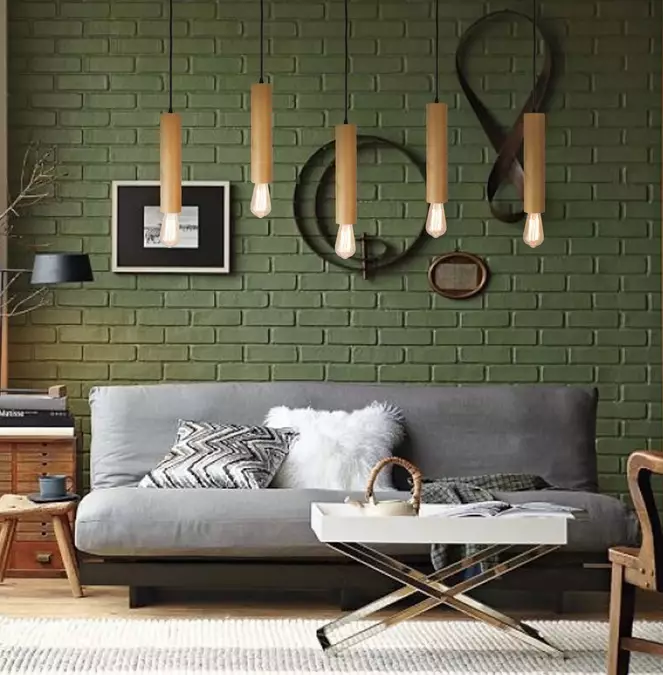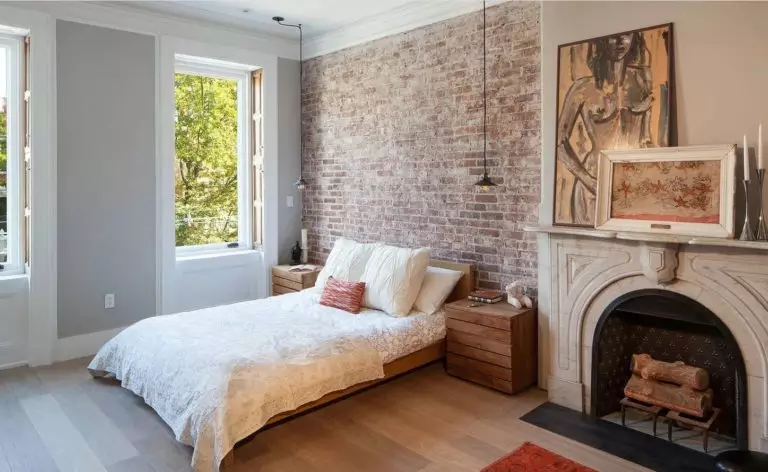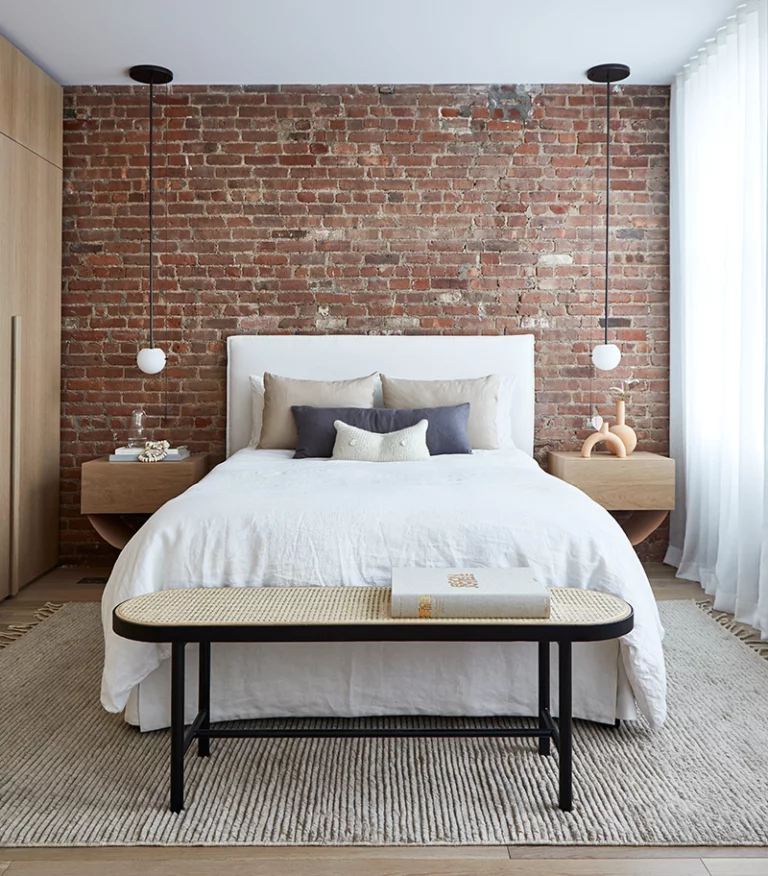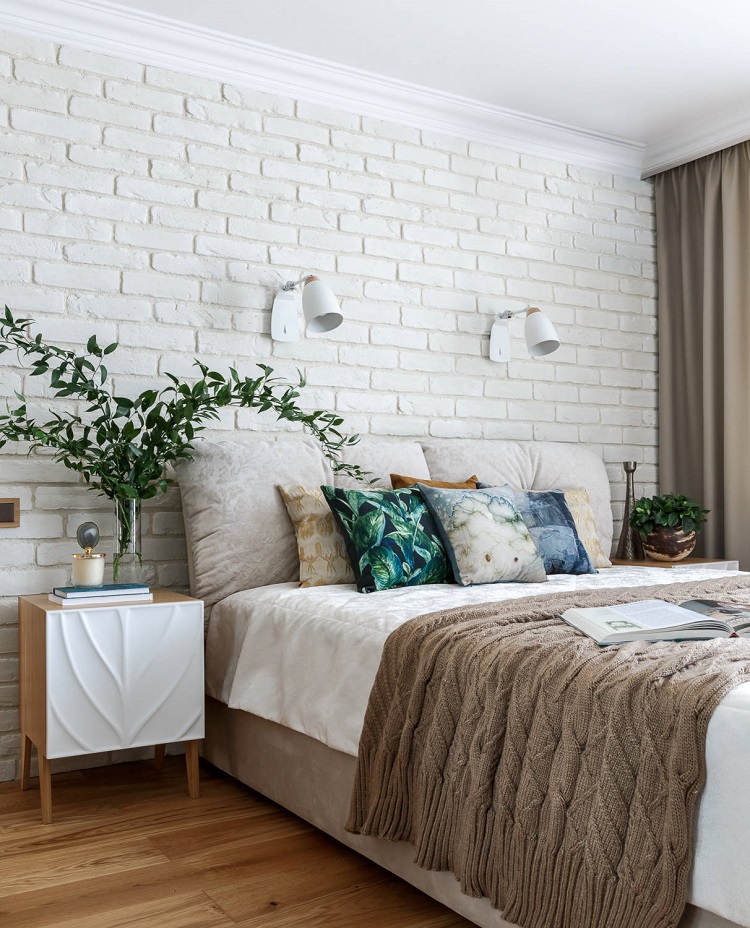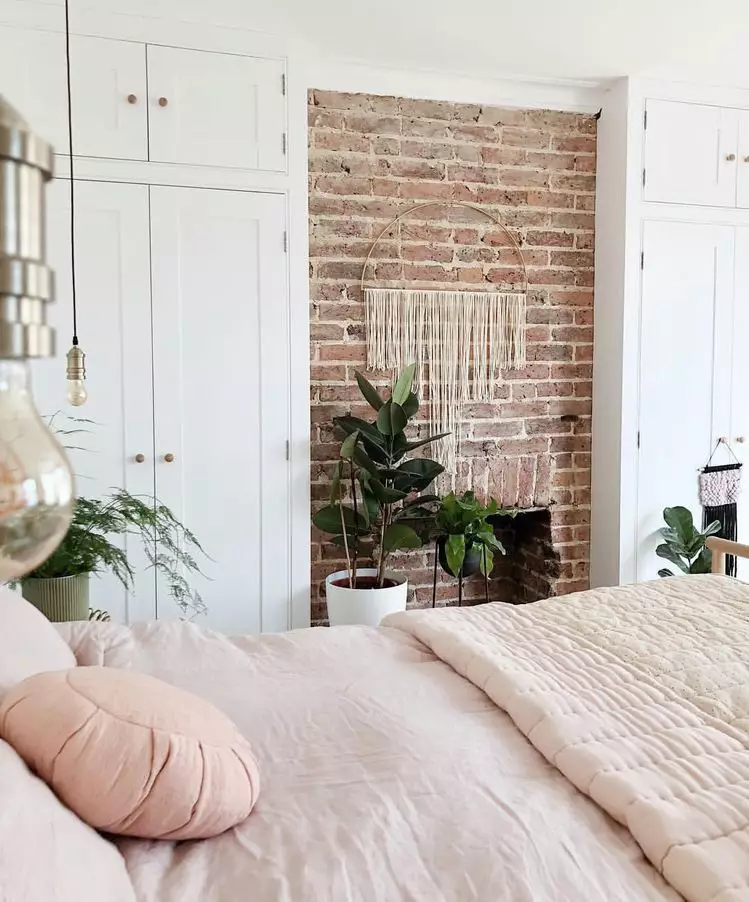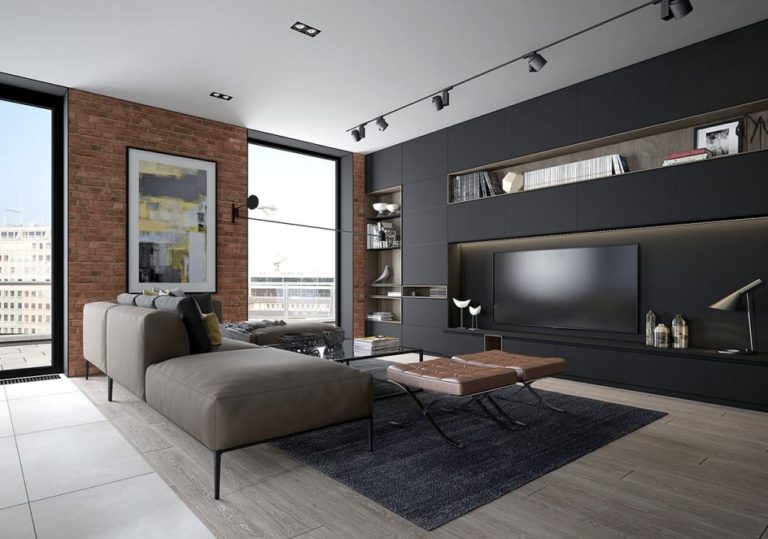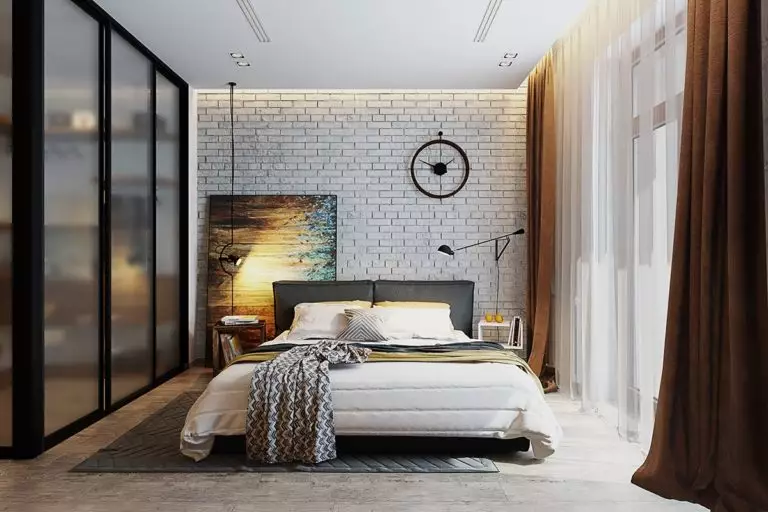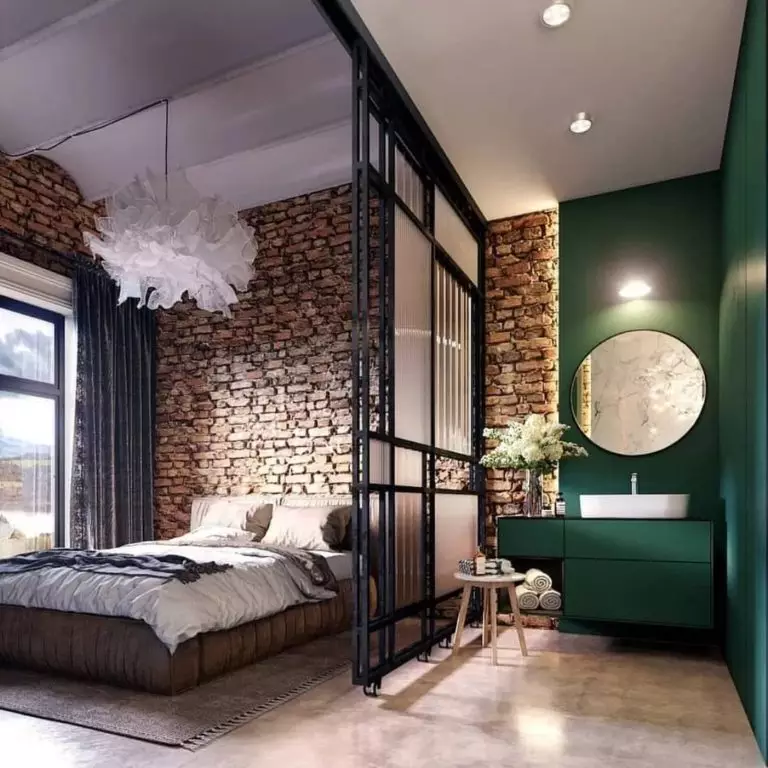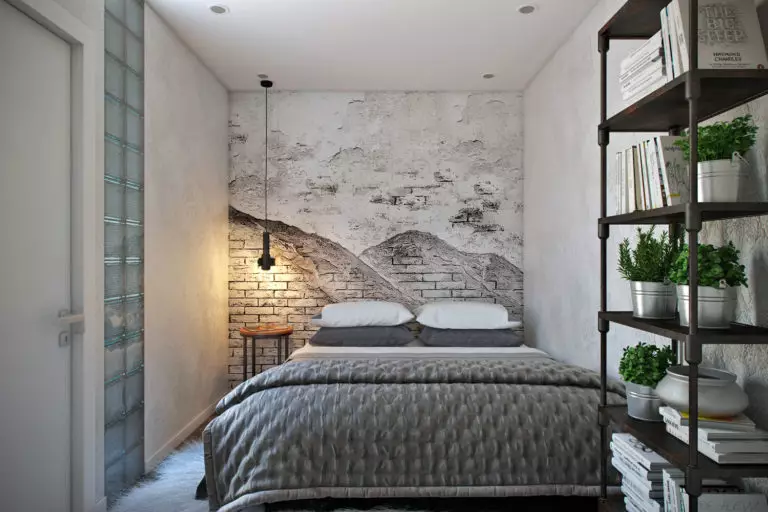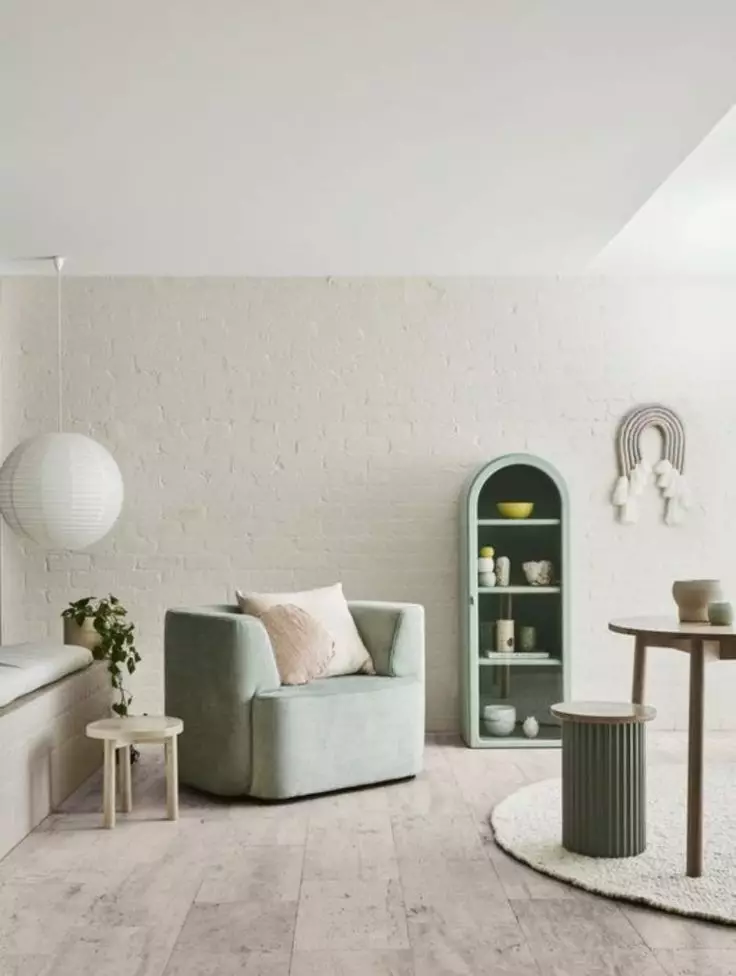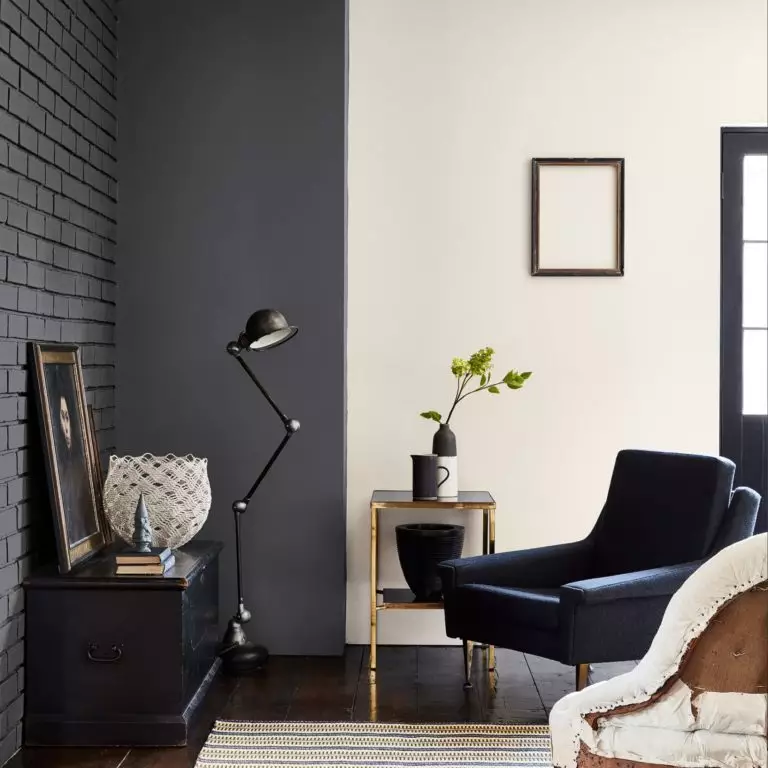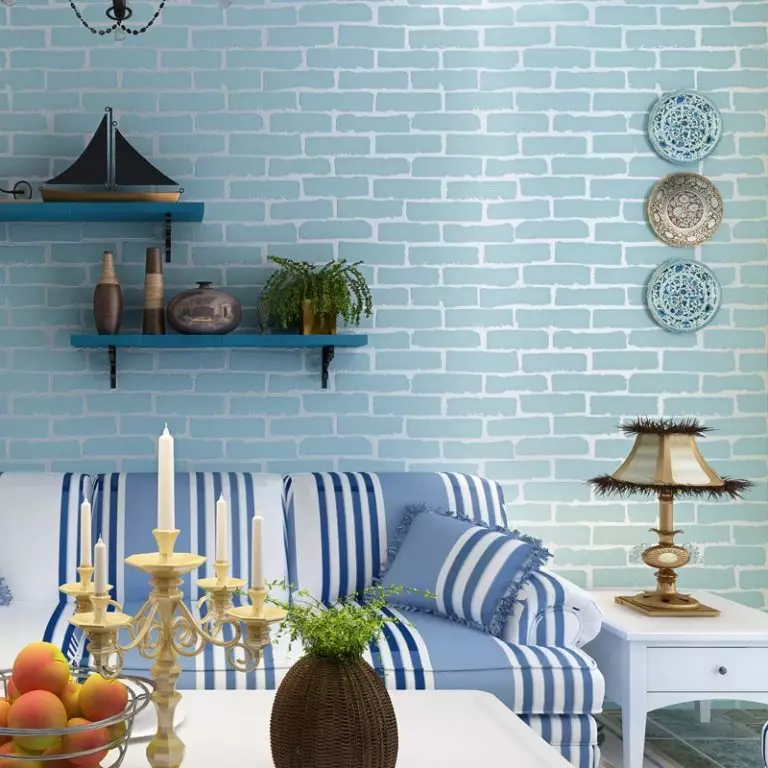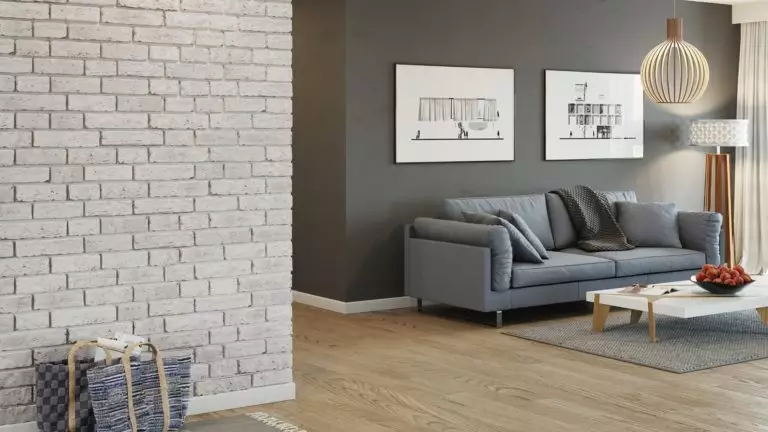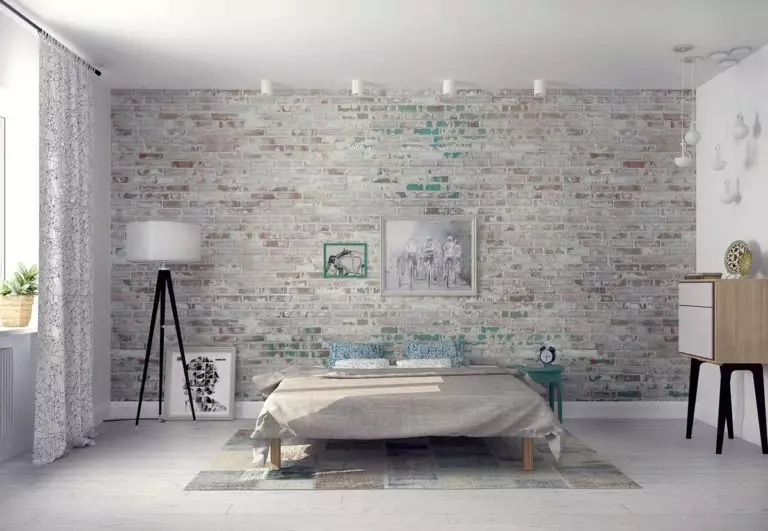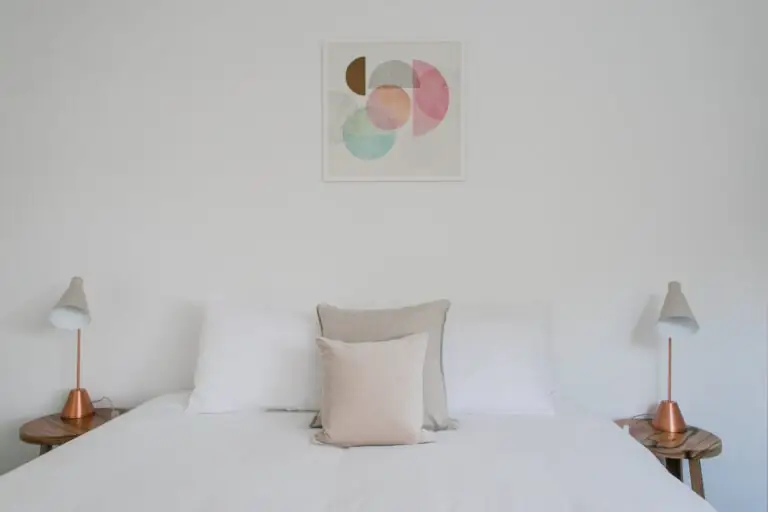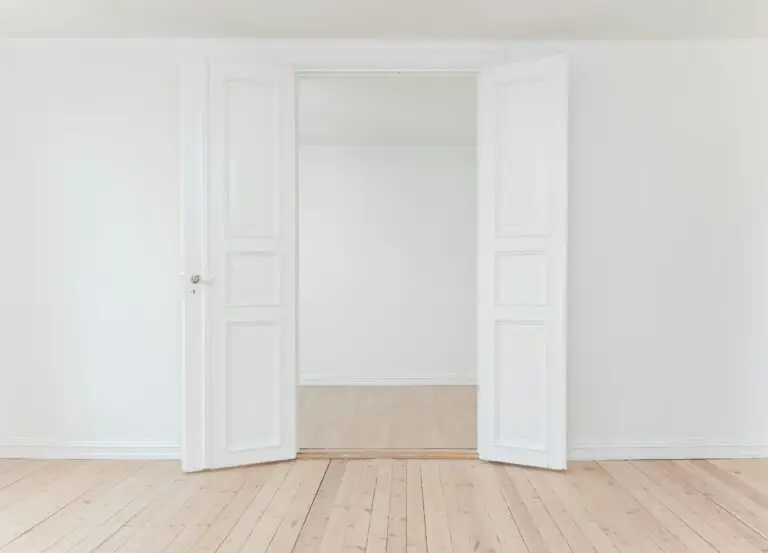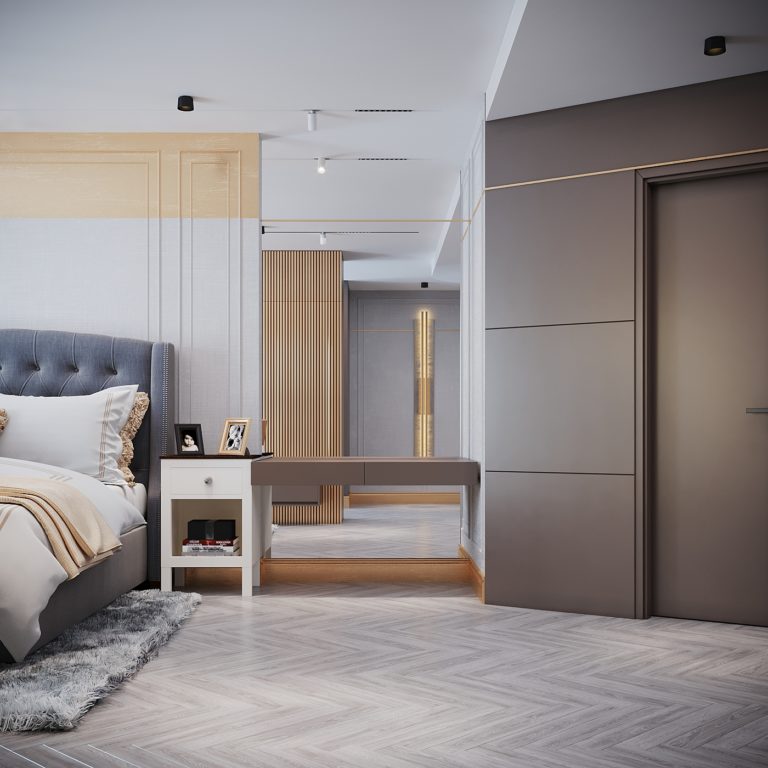Brick accent wall: features, styles, colors, and design ideas for different rooms
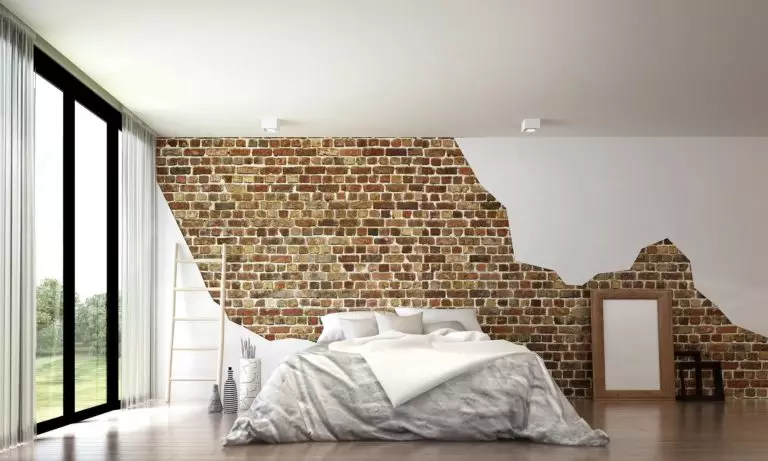
The history of interior design is full of paradoxes and surprises, and one of them was the use of a brick surface as an expressive, decorative accent. Even in the past two centuries, the open texture of ceramic building material was considered a sign of poverty. Therefore it was carefully hidden behind a dense plaster layer, wood panels, and expensive, including textile wallpaper. However, at the beginning of the 20th century, with the growing popularity of such a direction as the loft, everything changed significantly.
The conversion of abandoned industrial buildings into housing has generated a corresponding increase in interest in rough and natural textures. Representatives of bohemians, who most often set them up for apartments and studios, showed particular interest in the brick walls with peeling plaster, which was increasingly recognized as “unusually warm visually”, “having a rough charm”, and “ambiguously fascinating”. Since then, this emphasis has remained an integral part of industrial-style interiors.
Gradually, the designers tried to adapt the brick texture to other styles. The idea was a success, so today, you can see such walls in various interior design options. And if you’ve long been fascinated by its laid-back naturalness, it’s time to learn how to accent vertical surfaces and bring style and harmony to your designs.
Brick wall in the interior of the apartment: pros and cons
Before heading to the construction supermarket for everything you need for a brick accent wall, you must carefully weigh the pros and cons. The fact is that decorating an accent wall with brick is somewhat more complicated than decorating with wood, and therefore you will have to get acquainted with some of the details.
Pros of a brick accent wall
It is worth saying right away: a brick accent wall is a design technique with many advantages. Let’s take a look at some of them:
Cons of brick accent wall
As you can see, the list of accent brick wall merits is impressive. However, this design is often associated with specific “negative” features:
The focus on brick: compatibility with various interior styles
We have already said that an open brick texture is quite successful in adapting to various interior styles. That is why it is worth dwelling in more detail on the directions that are especially favorable to such accents.
Industrial & Loft
The loft-style can rightfully be considered the style that brought brick accents “into the light”. It is not surprising that such interiors are characterized by masonry in the so-called “original” form – from ordinary ceramic bricks made with deliberate rudeness and even some negligence. An unpainted brick wall makes a very suitable backdrop for functional and simple furniture, exposed wiring, as well as lamps, accessories, and decor items in a pronounced industrial style.
Gothic
In a way, the Gothic style can be considered the progenitor of modern interiors’ brick design. So, in Central Europe of the Middle Ages, bare walls made of ceramic materials were commonplace both in royal and knightly castles and in wealthy people’s homes. It is noteworthy that from the outside, the masonry looked precisely the same – first of all, this is typical for the period of the so-called “brick Gothic” of the XII-XIV centuries.
Today, Gothic is chosen by individuals with an unusual taste. They know what to focus on – high ceilings, pointed arches instead of doorways, wooden beams, and heavy furniture upholstered with the tapestry. A brick wall in such an interior adds authenticity: it may seem that it is directly transferred to our time from medieval Germany.
Ethnic
The prevalence of brick in ethnic interiors is due to the history itself. The fact is that this building material was invented in Ancient Egypt; from there, the architects of Asia and Africa already borrowed it and even later appeared in Europe. Traditional red brickwork is an absolute classic for ethnic style. A red brick accent wall becomes an excellent backdrop for patterned carpets and textiles, as well as accessories and ceramic utensils, characteristic of such a design.
Scandinavian
Very light or just white walls are an absolute must-have for the Scandinavian style. At the same time, do not think that brick will not work here: on the contrary, the natural texture of brick perfectly emphasizes the design’s comfort and simplicity. The essential thing, in this case, is painting the brick accent wall following the light and natural palette of the Northern European interior. A good alternative can also be a special decorative brick and white gypsum or clinker tiles.
Minimalism
Another style direction where white painted brick in the interior is entirely appropriate is minimalism. Textured and at the same time, even masonry can advantageously dilute the asceticism of the situation. It will also become an excellent background for bright details and various types of wall decor appropriate in such a design.
Pop art
Pop art is not very popular today, but it still has connoisseurs. Suppose the shocking, festive colors and everyday life challenge, characteristic of this beautiful style, are also close to you. In that case, you may well try to introduce a brick accent wall into your favorite interior. At the same time, integration options can be different:
Eco-style
The design, which offers open hints of closeness to nature, is also immensely supportive of brick accents. So, a wall of unpainted masonry will serve as a harmonious background for furniture and climbing green plants – all this will create the illusion of being in the park outdoors, only away from the hustle and bustle of a big city.
Rustic
If the American country gravitates more towards the wood, then the English direction, like French country (Provence), prefers brickwork. Most often, this solution is used to organically accentuate the fireplace area in the living room, as well as the kitchen or dining room.
Brick accent wall: relevance for different rooms
The accent wall decorated with bricks is invariably in the spotlight – and it is enjoyable that this design technique can be used almost everywhere. Let’s take a closer look at the conditions for creating an accent in various rooms:
Living room
It is considered one of the best places for decorating a brick accent wall. As a rule, this room is the largest, and therefore the volume of material will not affect the size of the space in any way. Most often, a wall under a TV or a fireplace area is designed in this way.
Kitchen and dining room
In both cases, brick accents look incredibly stylish, but you will have to abandon imitation materials in favor of more practical and unpretentious options – natural brick and clinker.
Hallway
An accent wall made of bricks, located in the area of the entrance group, will create an impression of your interior as current and trendy. You can use masonry to decorate an open hanger or wall with a mirror.
Bedroom and nursery
Brick has a rather strict texture, so it can be uncomfortable in a nursery or bedroom with such a wall – unless, of course, you are a loyal fan of the loft, or your teenager did ask for such an accent himself. However, a compromise is possible: the light-colored brick wall behind the bed looks harmonious and attractive.
Library or home office
The accent brick wall makes a beautiful backdrop for bookcases and shelving and creates a cozy vintage feel.
Materials for a brick accent wall: the choice is yours
The best option for decorating a brick accent wall is to clean off whitewash and plaster, peel off the wallpaper, whitewash or paint the resulting surfaces – and leave everything as it is. However, not everyone lives in houses with brick walls, and not everyone can do such a feat. Now we will tell you more about which materials will suit you.
Natural brick
The ideal solution for decorating an accent wall is a red brick made of various types of clay that is fired at high temperatures. The surfaces made of it are environmentally friendly, lend themselves well to painting, and look as natural as possible.
Another option is silicate building bricks made from lime and sand, which gives it its characteristic grayish-white color. It has better sound insulation than ceramic, but its decorative properties and moisture resistance are much worse, and therefore it is practically not used for interior accents. Even if a light wall is required, the designers recommend painting red bricks.
Tiles
Tiles are capable of impeccably imitating brickwork and are often used for interior and facade decoration. The tile is much closer to ceramic bricks in terms of composition and properties, but it also weighs accordingly; therefore, you have to be prudent when designing an accent wall on a drywall plane with its help. However, it still has more advantages – it is less dusty, easier to put on and dismantle, and costs much less.
Wall panels
Suppose you like the very idea of brickwork, and the method of its implementation is not too fundamental. In that case, wall panels with the appropriate texture will come to your aid – lightweight, incredibly easy to install, and attractive in price. At the same time, you choose solutions depending on the room where you plan to decorate the accent wall. So, plastic panels are more suitable for bathrooms and halls, while MDF elements are more often used for living rooms and dining rooms.
Wallpaper
Wallpaper with a brick pattern is one of the most affordable decor options, both in terms of price and various solutions. As a rule, the volumetric texture is rare for them, except for unique foamed wallpaper, which is also not very expressive. However, in this, you can find your plus: the material does not eat up space and therefore is suitable for small rooms with a budget renovation.
Polystyrene
If you dream of decorating an accent wall with a minimum of time and material costs, you should think about such material as ordinary foam. Its use can be safely attributed to the DIY category since you can cut out the desired size elements and complete this masonry yourself.
The very lightweight, excellent soundproofing properties and the ability to “accept” any coloring compositions make this material quite a good option. Still, we must not forget about such problems as fragility. Besides, when decorating a high-quality interior with expensive materials, an accent wall made of polystyrene will still look cheap and extremely inappropriate.
Quartz vinyl
Quartz vinyl is a thin, lightweight, and flexible tile, the primary raw materials for which are sand and special polymers. Its rapid growth in popularity has provided such advantages as easy installation, durability, and elasticity. Today it is available in various colors and textures, so finding a brickwork design is not difficult. The only drawback can be the complex care since quartz vinyl does not tolerate household chemicals, and it is complicated to clean it with damp rags and sponges.
Brick accent wall: color solutions
It would seem that natural brickwork is good in itself, including the shades’ naturalness and tranquility. However, if this option seems too simple to you or is not wholly adapted to your interior, then the paint of the desired color is always at your disposal.
The following colors are most often used for painting brickwork in modern interiors.
Red and orange
Shades from bright saffron and terracotta to maroon are considered traditional for bricks – in some cases, these shades distinguish even unpainted masonry. Such tones are quite warm and, at the same time, austere, and therefore create an excellent accent in the loft and ethnic styles.
White
A color that transforms a brick accent wall into a versatile decor, appropriate in minimalism, Scandinavian, and in the same industrial style.
Black
A non-trivial solution for very light and laconic interiors that require harmony and rigor.
Gray
A popular paint option for the most modern and contemporary designs. You can use any shade for painting bricks – from smoky to dark graphite.
Bright and rich tones
Blue, yellow, and green brick walls are rare, but in fusion and eclectic interiors can look very, very interesting.
When painting bricks, it is worth considering that you cannot remove the paint from it: due to its porous texture, it absorbs the coloring composition rather quickly. The only way out is to apply a different color on top of the previous layer, especially since it is quite effective on brick.
Types of brick bond for an accent wall
This may seem surprising to many, but today there are more than thirty brick bond options. For an accent wall, only three are most often used:
If you wish, you can create the styling you like not only from bricks but also from quartz vinyl or clinker tiles – for this, you will need tools to cut the elements into pieces of the desired length.
Decorating brickwork
An accent brick surface looks very stylish on its own, but in most cases, it requires additional details, without which it can seem impersonal and coldish. Depending on the style you choose, these details can be:
Brick wall as an accent: Conclusions + Photo Gallery
By choosing the right design option and skillfully combining it with decorative elements, you will be able to implement a design that will not leave indifferent either your guests or yourself.
